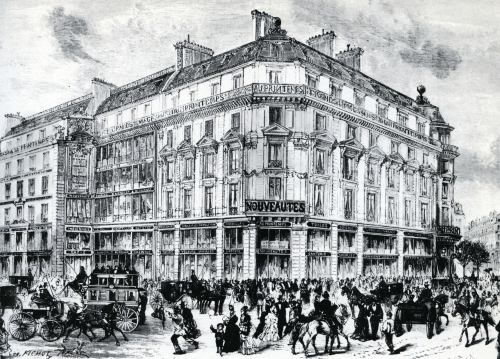
Founded by the visionary Jules Jaluzot, Printemps immediately stands out for its size and location.
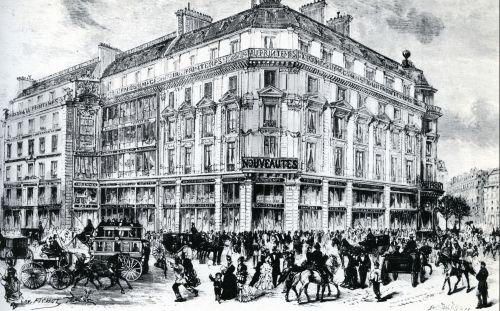
Jules Jaluzot, a young man from Nevers, opens his Printemps department store at the tender age of 31, already having displayed a strong degree of business acumen. He had gained experience at various Parisian stores including Le Bon Marché, which had been taken over by entrepreneur Aristide Boucicaut in 1852. Jaluzot was the manager of the store's most important department, silks, which is also where he met his wife. She was an actress at the Comédie Française, and her 300,000 franc dowry from their marriage allowed him to start his own business.
Benefiting from his expertise and audacity, Jaluzot’s decisions prove to be successful. He chooses to set up shop in Rue du Havre, near Saint-Lazare, an area that is not the most central nor thought to be the most pleasant. The Opéra Garnier is still under construction at the time and the proximity of the train station is considered dusty, noisy and even dangerous.
Jaluzot, however, sees huge potential where others only see an outlying neighbourhood: the ever-growing numbers of travellers passing by, the development of western Paris and its well-off clientele, and the future St Lazare-Opéra-Madeleine triangle.
As part of its 17 departments, Printemps is the first store to offer clothing, interiors, textiles, hosiery, dry goods, household linen and furniture, all under one roof. Everything respects the brand’s promise: "Everything will be new, fresh and beautiful, worthy of the name Au Printemps" ("spring" in French).
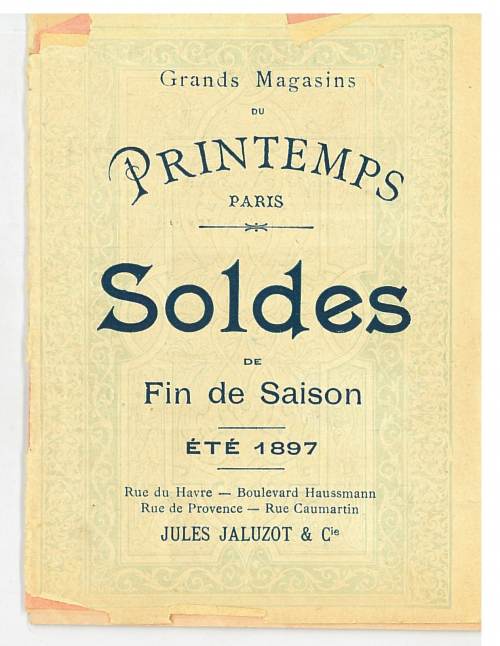
Commercial and marketing genius: Printemps innovates by creating the concept of "sales".

It’s a tremendous hit! While other stores discreetly try to dispose of their old stock, often arranging them alongside new products, Jaluzot promotes transparency. Only two months after Printemps' grand opening, he launches the concept of "sales".
The invention is an absolutely revolutionary one on several fronts. First, commercially, because it offers the previous season's products at reduced prices for a specific period of time, which results in the remaining stock selling like hotcakes.
Second, culturally, because the promotion of the sales makes great use of billboards, advertised as a big event in town each time. Finally, it's a marketing revolution, offering tangible proof that the brand keeps its promise of a new, fresh and beautiful offer.

Mail-order boom: the first Printemps catalogues are sent overseas.
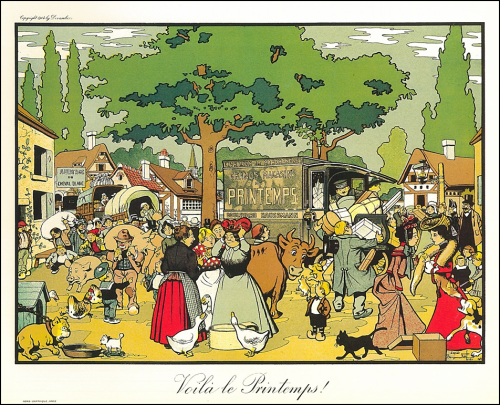
At a time when travel is costly and time-consuming, and many countries do not have department stores to call their own, Jules Jaluzot develops mail-order sales. This is such a success that in less than 10 years, Printemps is able to serve clients throughout Europe and beyond. Catalogues are even sent as far as Japan. Offices are set up everywhere, from Egypt to Asia, to take and deliver orders. Printemps employees appointed to this service are required to be polyglots as the catalogues are translated into local languages.
Because of this drive to expand, Parisian chic knows no borders, from the French countryside to the rest of the world.
At the beginning of the 20th century, mail order represents 25% of the store’s revenue with 11 million catalogues making their way overseas.
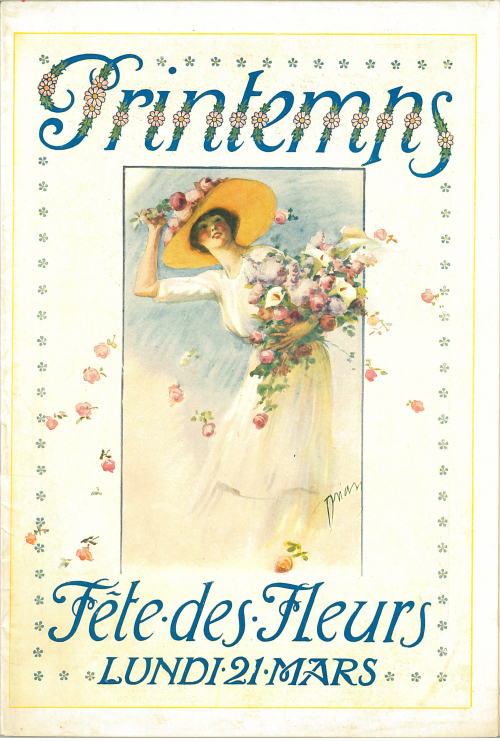
Vive le Printemps! On the 21st of March, the department store offers a bouquet of violets to each customer.
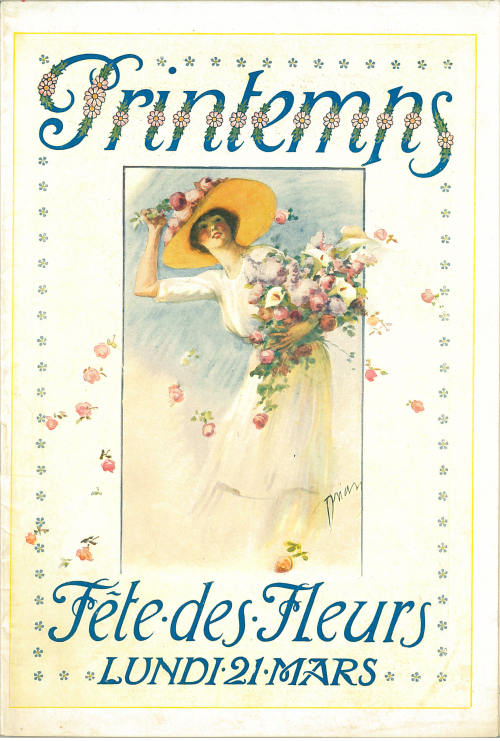
Jules Jaluzot has a natural sense of communication and promotion. While other stores' names refer to their prices (Le Bon Marché), their owner’s name (Harrods) or to their location (Au Louvre), Jaluzot choses to celebrate the first day of spring and connect Printemps to the notion of rebirth and freshness. He offers each customer a bouquet of violets, in time becoming the symbol of the department store.
This gesture draws a great deal of attention, and so becomes a perfect occasion for more advertising, communication and literature. Even the French writer Emile Zola draws his inspiration from Jaluzot’s Printemps for The Ladies' Paradise: "She was talking about the store's new promotion, an idea of Mouret’s which he advertised in all the papers, small bunches of white violets bought in their thousands in Nice and distributed to any customer who made even the smallest purchase."
Another great promotional idea includes the creation of appealing images that are distributed throughout the city, all year long, to attract children and, of course, their mothers, too!
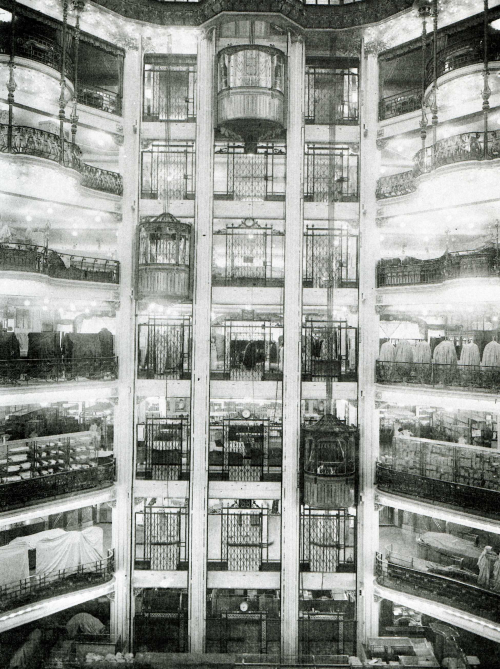
High-flying novelties: two elevators send Printemps’ appeal soaring
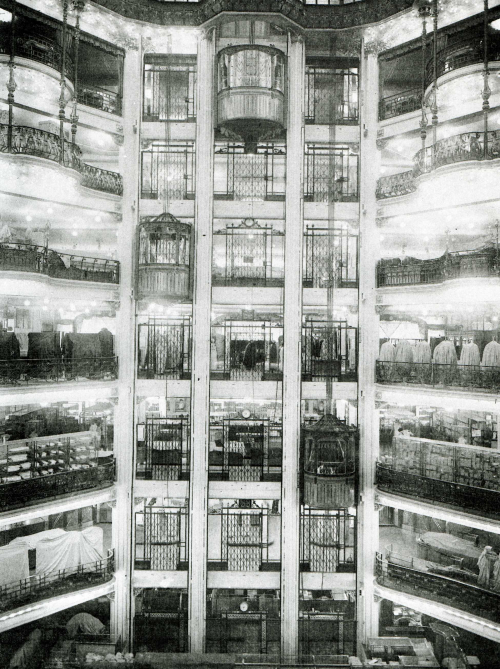
On the 6th of April 1874, Parisians are invited to the "inauguration of the Vienna elevators" and to discover the "new stores". Printemps had just acquired two special elevators, an innovation of their time, installed in one shaft in the building’s courtyard. The movement is constant, from the basement to the attic, one going up, the other going down, both maneuvered by special operators.
Presented at the Vienna World’s Fair the previous year in 1873, they are met with such success that they are nicknamed "Vienna elevators".
This innovation is an opportunity to draw crowds, and especially children, for whom a series of fun advertisements are designed. The elevators enable the store to grow even more. Printemps increases its surface area both outwards, by acquiring two buildings on the Rue de Provence, and upwards, with the construction of new floors.

A jewel of creativity, Printemps is the first department store to attend the World Fairs

Conscious of the value of its savoir-faire, Printemps plans to be part of the World Fairs held every 11 years in Paris. It becomes the first department store to attend the event.
In 1878, it occupies two booths in the garment industry section and receives two silver medals, one for its trousseaux and household linen, the other for its women’s and children's clothing.
In 1889, it stands out by using the iron "offcuts" of the Eiffel Tower, the star of the fair, to make medals, paperweights, inkwells, and other stamped souvenirs.
In 1900, the World Fair is marked by the construction of the Pont Alexandre III, together with the Grand and Petit Palais. Printemps has its own “Mondern'style” pavilion designed by the architect Risler and the decorator Chéret, a celebration of decorative opulence and prestige, and the spring violet!

Perfumes, jewellery, women’s and men’s clothing: Printemps’ elegance continues its conquest.
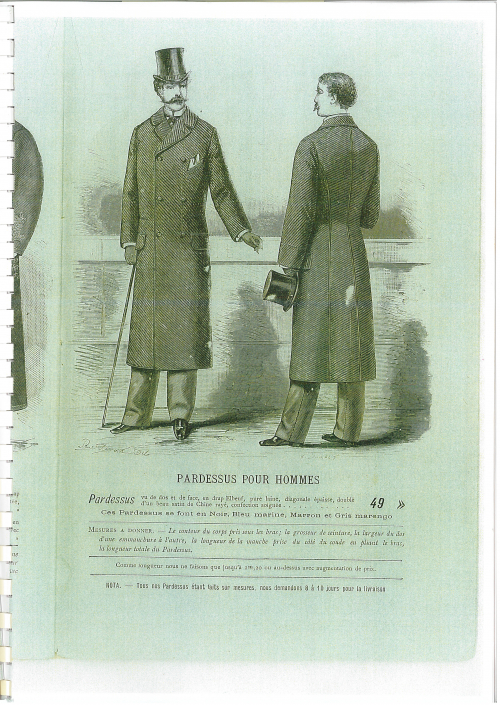
Printemps has built a reputation of elegance by paying attention to the quality of its products and offering these at a reasonable price. Additionally, it makes sure the diversity of its offer is always growing, focusing on great taste and meeting the increasing needs of its clientele.
As such, in 1878, the brand appeals directly to its male customers with the creation of its first men’s clothing department.
A little later, in 1884, the brand enters the perfume game with its own range of fragrances: "Extra-Printemps" and "Paris-Printemps".
Women’s shoes make another prominent entrance with the Printemps-branded "Paris-Lux" design.
The promise of a new, fresh and lovely chic is more alive than ever.

Destroyed by fire, Printemps rises from its ashes as an iron and glass symbol of modernity.
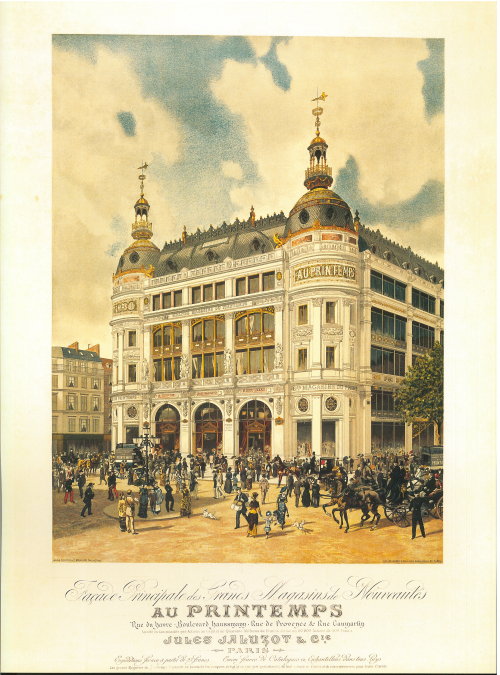
In the early morning hours of the 9th of March 1881, Printemps—at the time lit by both gas and candlelight—catches fire and is almost completely destroyed. Jules Jaluzot, looking for new capital, changes the financial structure of the store and issues shares. He calls on employees and the public to participate in its reconstruction. The newspapers of the time report that female customers, worried about losing "their" elegance, spontaneously offer their savings!
The architect Paul Sédille is commissioned and designs a completely new building with turrets, wide aisles, customised counters, augmented perspectives, aerial passageways and a central glass-covered nave to allow daylight to pour in.
One distinguishing feature are the visible iron girders, precursor even to the creations of Gustave Eiffel. The final result is revolutionary, resembling a grandiose and modern cathedral.
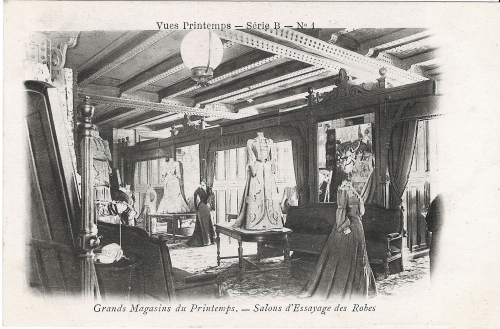
Madame Barutel, famed Parisian seamstress, unveils her Printemps workshop.

She is Paris’ favourite seamstress and Printemps offers her a workshop of her own within its walls. Taking on the leading role at the dress department, Madame Barutel designs ready-to-wear creations that allow her female clientele the opportunity to own the fabrics and styles conceived by one of the industry’s specialists.
Le Figaro newspaper on the 5th of March 1883 sums it up like this: "True elegance does not lie in the sumptuousness of the fabrics nor the richness of the decorations, it is above all the result of a flawless cut, a successful combination of shades and ornamentation."
This brand-new service is a success, attracting new clientele and even allowing Madame Barutel to retain her original customers. A little side note, Madame Barutel even hired the young Yvette Guilbert, future singing star, as a Printemps salesgirl.

A pioneering and enlightened choice: Printemps adopts electricity six years before Paris.
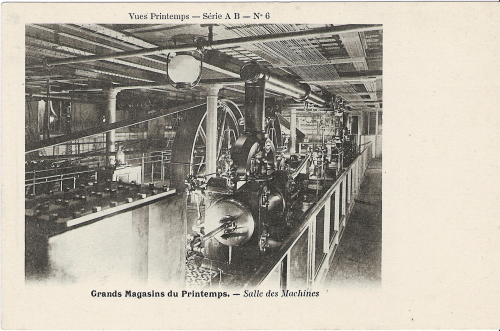
A pioneer of modern architecture, the Printemps building designed by Paul Sédille (currently Printemps Beauty & Home) adopts the new electric lighting developed by Thomas Edison. In his memoirs from 1885, Baron Haussmann himself says he cannot believe it, and as for the city of Paris—it only starts using electricity in 1889.
Ahead of its time, Printemps is equipped with 160 "Yablochkov" arc lights and 112 filament lamps, all powered by machinery installed in the basement of the building.
This innovative technology changes shopping as we know it and proves to be a commercial stroke of genius. As the advertisements of the time go, it "allows one to pick out even the most delicate fabrics at whichever time of day or night because, unlike gas light, it does not alter the shades".

An Art Nouveau wonder, the new store designed by René Binet intensifies Printemps’ prestige.
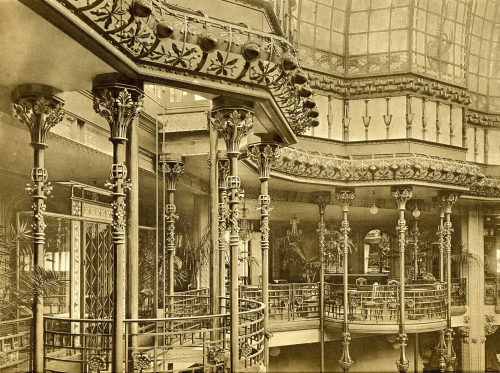
In the words of Gustave Laguionie, store manager from 1905, "in this day and age, not growing means you’re shrinking", and so the conquest for more commercial real estate is on. Architect René Binet is commissioned for the construction of a new store.
Between 1907 and 1910, a second Printemps comes to life, echoing the design and spirit of the first to preserve a unity between the buildings. It features cornered rotundas, a vast terrace, and audacious octagonal 42-meter-high halls. The ironwork of the entire building is embellished with balconies and banisters so typical of Art Nouveau.
This architectural masterpiece is entirely designed for retail, with its three panoramic elevators connecting six floors and two underground levels enabling direct access to the first store. And, of course, infinite stalls full of desirable products, with everything now on display.

Printemps follows its clients to Deauville, it first location outside the capital.
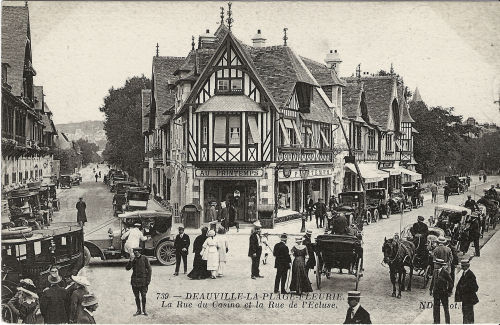
The importance of leisure and travel is growing, and the most well-off classes now settle in Deauville for the summer. This glamorous holiday resort resembles Paris at the beach, and Printemps is there to accompany them.
It is a first for a Parisian department store, and a particularly pertinent destination—Gabrielle Chanel will also open workshop there the following year. The store, exclusively open during the summer, takes up residence in an authentic Norman house. The salesgirls recruited are among the best employees of the Parisian flagship and are housed in a private villa.
Much more than a simple sales stunt, this new location is a symbol of Printemps’ policy to meet its customers, to be in the right place at the right time. This Norman Printemps branch is the first link in a long chain of stores located throughout France.
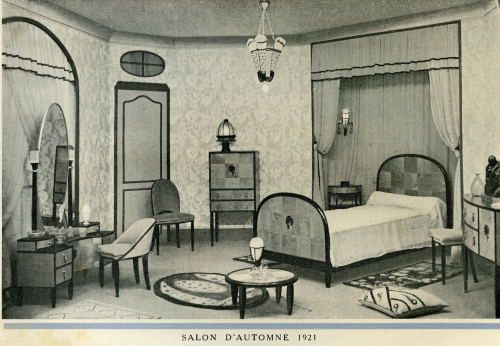
The paramount of good taste: the Primavera art workshop created by René Guilleré celebrates artists and artisans.

Art Deco is looming and Printemps celebrates with the installation of the visionary Primavera workshop within the department store in 1912. The idea arises from a meeting between Pierre Laguionie (son of Gustave) and René Guilleré, famous art critic and founder of the Société des Artistes Décorateurs. Both have a common dream of modernity, to unite artists and artisans for the benefit of a pioneering and accessible style.
The workshop, directed by René Guilleré in collaboration with his wife Charlotte Chauchet, a painter herself, gathers a group of young and diverse talents for the creation of furniture and limited-edition craft objects.
Within the first year, 813 pieces are produced, growing to 10,000 pieces after 10 years. They will prove to have a great impact on the aesthetic landscape.
Primavera takes part in all the major artistic events of the time and manufactures, among other projects, the lounges of the Normandy liner.
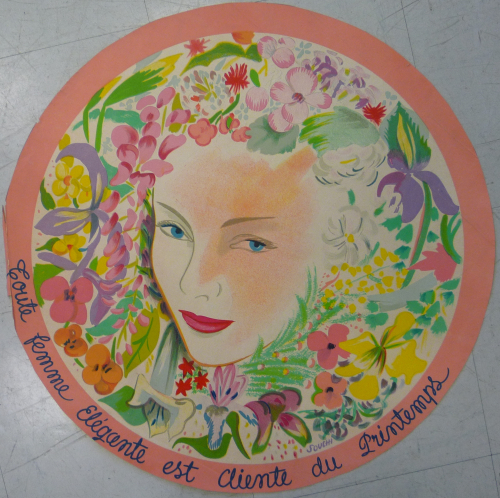
"All elegant women are Printemps customers": the department store is the beacon of taste.
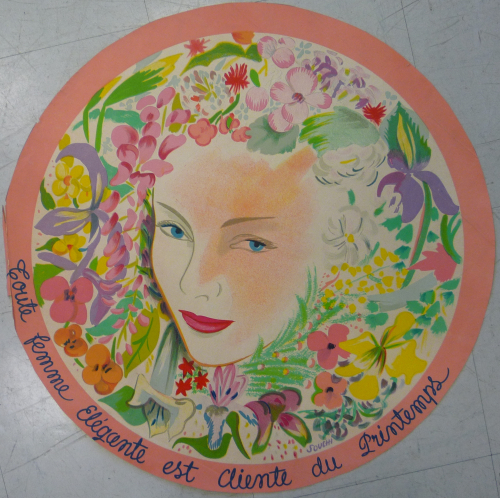
After the dark hours of the First World War, Printemps rebuilds all its splendour as the favourite destination of a clientele eager for fantasy, luxury and beauty. The new slogan of the department store becomes: "All elegant women are Printemps customers."
As beacons of taste, the two grandiose buildings present the most appealing and refined stalls while the storefronts showcase charismatic mannequins specifically designed for the female customers. The address is the first-choice destination for a leisurely stroll. This is all the more remarkable as it advocates accessibility to a chic lifestyle previously reserved for a small elite.
Thanks to Printemps, elegance is no longer the exclusive domain of the clients of couture houses. It becomes the privilege of all.
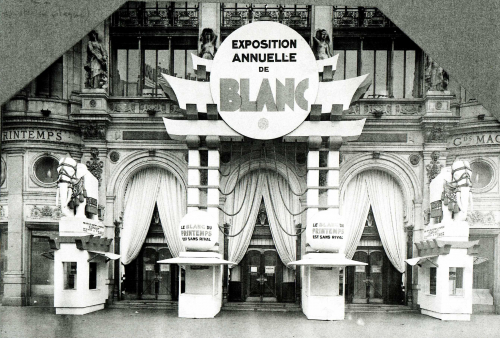
Printemps transforms into a temple dedicated to the cult of the elephant for its annual Linen showcase.
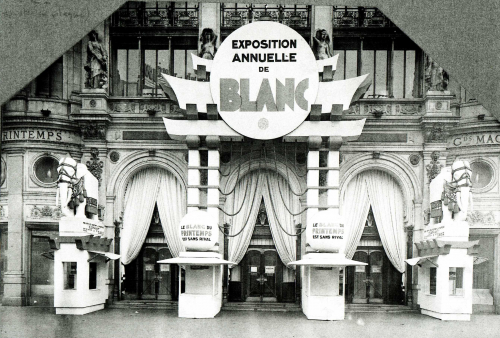
Printemps' annual themed showcases grow in scale and reputation. The Linen showcase, focuses on household linen and is held at the beginning of each year, taking a leap forward in 1922. The event’s mascot is the elephant—a symbol of good fortune, strength and longevity, which evokes a mythical faraway kingdom. Its imposing figure holds court over the decor throughout the store’s rooms and galleries, in a grandiose scene that piques visitors' enthusiasm.
Due to its success, the elephant will return annually to guard Printemps’ precious linens for more than 25 years.
This pioneering marketing strategy, amplified by its extravagant staging in the store’s wide aisles, is one of Printemps’ most famed trademarks. For Printemps, business and pleasure are inextricably linked; the thrill of discovery, of dreams, of the exceptional.
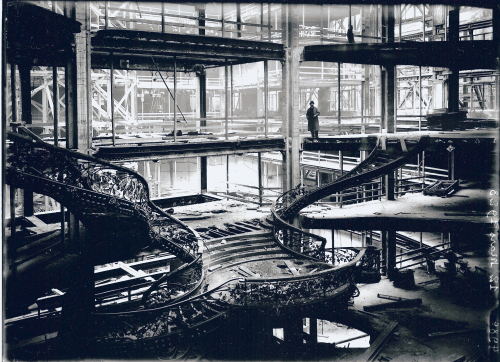
Ravaged by another fire, the store rises again, stronger than ever, ready for an unforgettable grand opening.
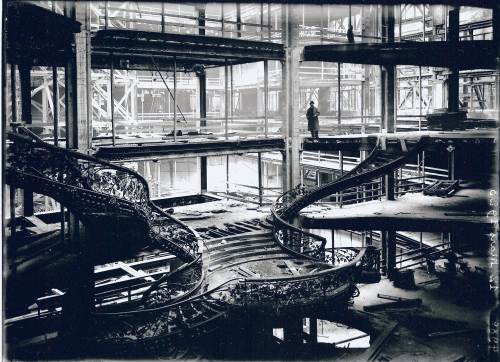
A short circuit causes a fire that destroys the new store; everything has to be rebuilt. Who better to tackle it than Georges Wybo? The former student of Binet is familiar with new American security methods thanks to his time studying abroad.
The building is rebuilt exactly as before, including the stained-glass cupola windows that were completely destroyed. This time the store is equipped with the new "Grinnell" automatic fire-extinguishing system and "Luxfer" fireproof glazed windows imported from the US, along with fire doors and curtains. From here on, Printemps benefits from cutting-edge protection and a new revolutionary installation: its first escalators.
In 1924, the re-opening of the store sets the stage for an unforgettable gala evening benefitting the French Red Cross. The two-day celebration featured Diaghilev's Russian Ballet show, jazz and opera concerts, and a large fair throughout the Printemps aisles.
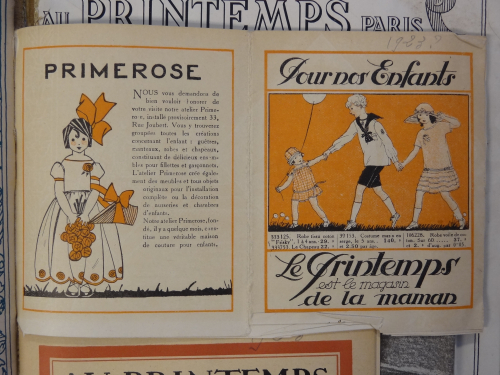
Printemps confirms the excellence of its own labels with Primerose, a creative studio for children.
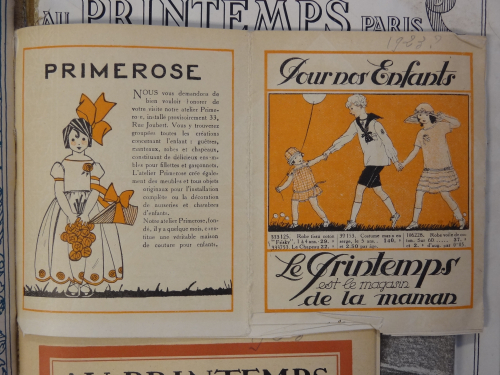
Printemps' own labels are its signature: collections of high-quality products at fair prices. At a time of increased competition between large department stores—especially on Boulevard Haussmann—it is a perfect way to assert the brand’s unique character. The creation of the Primavera art studio in 1912 was an immediate success.
Primerose makes its debut in 1922. It is conceived as a fashion house for children, providing the elegant and exclusive lifestyle once reserved for adults.
Primerose features chic yet lasting clothes and accessories, solid and colourful furniture, as well as a variety of educational toys. Each item is based on an original creator design, handcrafted in limited series at affordable prices. Spoiling children to charm their parents: behind Primerose’s outstanding creativity, one recognises Printemps’ art of seduction.

Grand Concours de la Mode Idéale: customers vote for their favourite styles.

Printemps regards its customers as modern and independent women, and intends to contribute to their emancipation. Therefore, in 1923, the department store organises the "Grand Concours de la Mode Idéale" (Grand Ideal Style Competition) to encourage them to speak out.
This event is a referendum in which customers are invited to choose the best embodiment of their tastes from among 24 contemporary styles. The operation is a real success: 203,351 women participate in the different voting categories: day dresses, evening dresses, shoes, sleeves, sizes and hairstyling, among others.
Many loyalty rewards are distributed throughout the day: coats, dresses, bags, carpets, suitcases, porcelain tableware etc. The elegant corset-free silhouette carefully selected by the majority of voters becomes a precious tool for Printemps, allowing the store a better understanding of its customers’ expectations, so it can develop its offer accordingly.
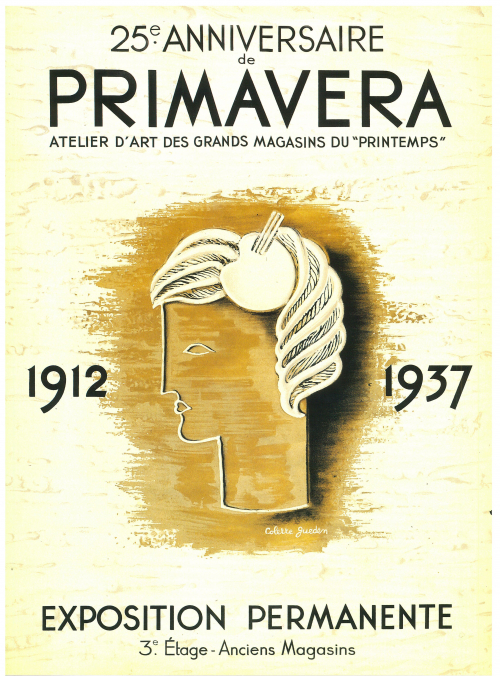
International exhibitions and Primavera trade fair: Printemps as an Art Deco ambassador.
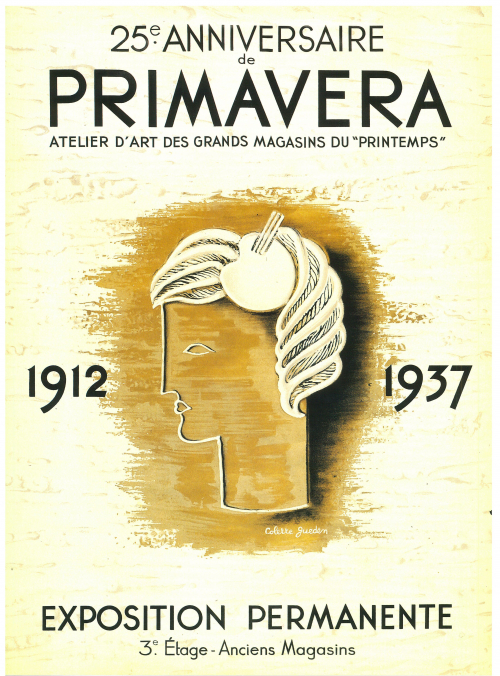
The Primavera Pavilion, designed by architect Henri Sauvage for the 1925 International Exhibition of Decorative Arts, is a sensation. The architecture studio goes on to win five grand prizes and eight gold medals that year.
Building on this success, the department store decides to repeat the experience, this time within its own walls. The first "Petite Foire des Arts Décoratifs Modernes" (Trade Fair for Modern Decorative Arts) is held in 1926, in an extravagant setting admired by all Parisian arts and culture enthusiasts. The event features an inspired range of creations from the studio itself, as well as clothing and accessories. It will go on to feature in the store’s annual program.
In 1937, at the final Paris World’s Fair, dedicated to the "Arts et Techniques dans la Vie Moderne", Primavera can be found in the Decorators’ Pavilion and Ceramics and Glasswork Pavilion.

Le Havre, Rouen, Lille: Printemps expands to get closer to its customers.

Following the inauguration of Printemps Deauville in 1912, the conquest of the nation continues. The Parisian company opens brand new stores, but also takes over existing ones, undertaking renovations to modernise or expand the buildings.
In 1928, Printemps buys La Boule d’Or in Le Havre, and La Providence in Rouen before renaming it Printania. The following year, the Galeries Lilloises (in Lille) also join the chain.
In 1929, the development plan is made easier by the creation of the SAPAC (Parisian Society for Shared Purchasing) which centralises purchasing. Products are now selected and ordered by full-time buyers instead of the stores’ department managers. With a dedicated structure and a streamlined organisation, Printemps can pursue its strategy to get ever-closer to its customers.

Printemps invents men's ready-to-wear fashion with Brummell, a label immortalised by the poster designer Cappiello.
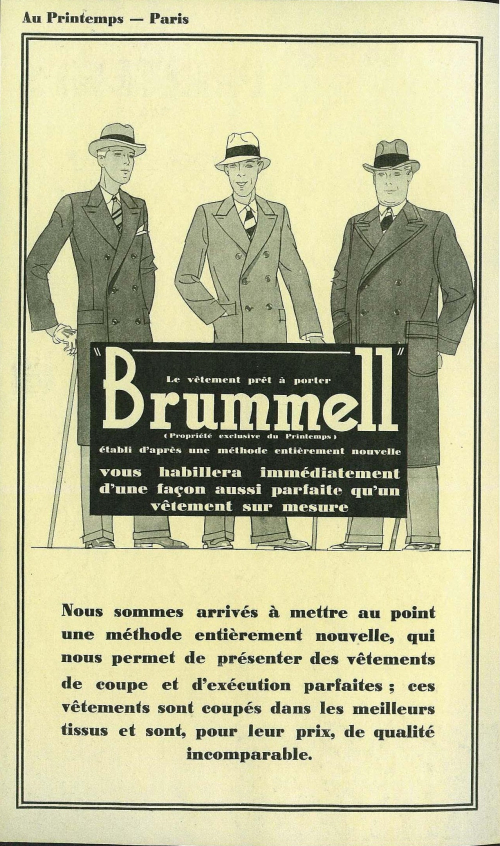
In an unprecedented move, Printemps invents men's ready-to-wear fashion with its new label Brummell. Up to this point, men had to go to a tailor or settle for workers' blouses. They now have their own fashion department where they can find a modern, perfectly cut suit at an attractive price.
Behind the revolution poised to overthrow bespoke suits, one can find the same industrial processes on which the reputation of the French department store is built.
For the first time, customers can choose from five layouts and five lengths for each measurement, meaning 260 different sizes are available, covering all body types. In 1936, the label is immortalised by the famous poster designer Leonetto Cappiello.
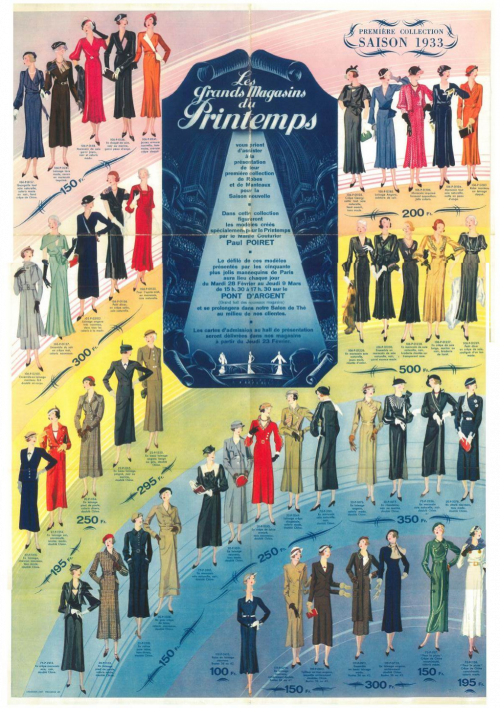
Designer Paul Poiret creates an exclusive collection for Printemps, a department store first.

In the midst of the economic depression, the store’s director Pierre Laguionie asks Paul Poiret to create a series of affordable but exceptional pieces for Printemps that he would introduce himself to the customers. The great fashion designer, known for his pioneering corset-free silhouettes, accepts the challenge immediately.
The first collection is a triumph. It is presented to the crowd in the Pont d’Argent, a spectacular hall in the department store built specially for the show.
As Poiret himself says, the approach is revolutionary: "Do you think any other house in Paris (...) would have been bold enough to ask a luxury fashion designer to create affordable pieces intended for the average French customer? Printemps is the only one that thought of it, and the only one to have actually done it."
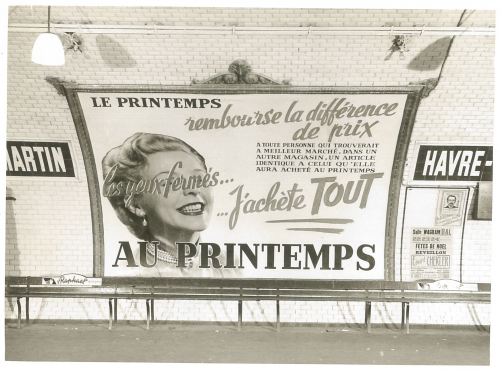
"I can shop blindfolded at Printemps"—so says the slogan... more than ever, confidence in the department store grows.
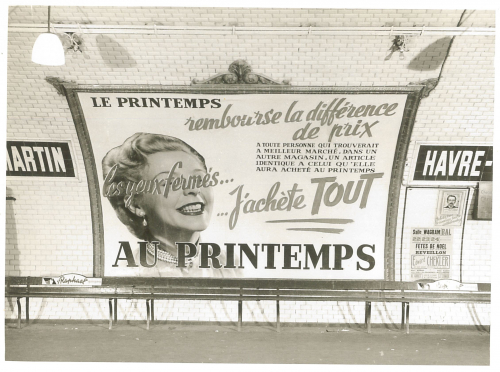
From the very beginning, trust has been one of Printemps' key selling points. Its original motto was "E Probitate Decus", meaning "My pride is my integrity". In the aftermath of the Second World War, trust is more essential than ever: customers’ urge to buy is back and, after a long ersatz diet, they demand quality.
This is particularly true of the spread of new materials and products on the market: synthetic fibres, plastics and home appliances. The department store adopts a new catchphrase: "I can shop blindfolded at Printemps", supported by iconic ads in the press and promotional films.
It is not simply a figure of speech: the store promises to refund the difference to its customers if they find the same products for a better price elsewhere. This commitment is a Printemps trademark: quality products at a reasonable price has always been its guiding principle.
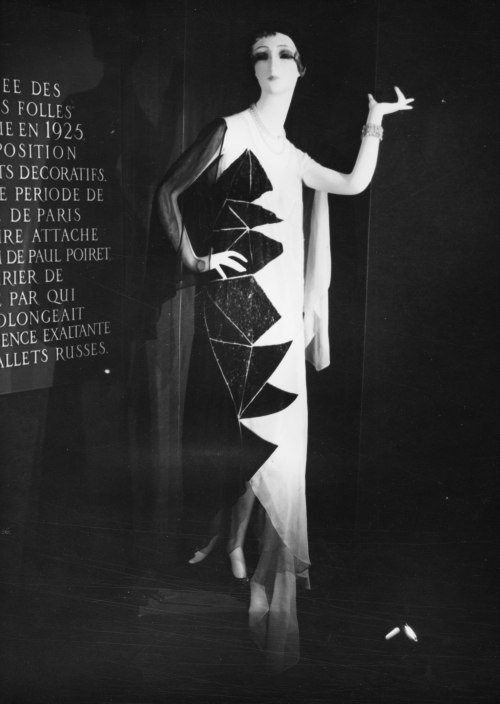
"50 years of Parisian elegance": Printemps exhibits the greatest fashion designers.
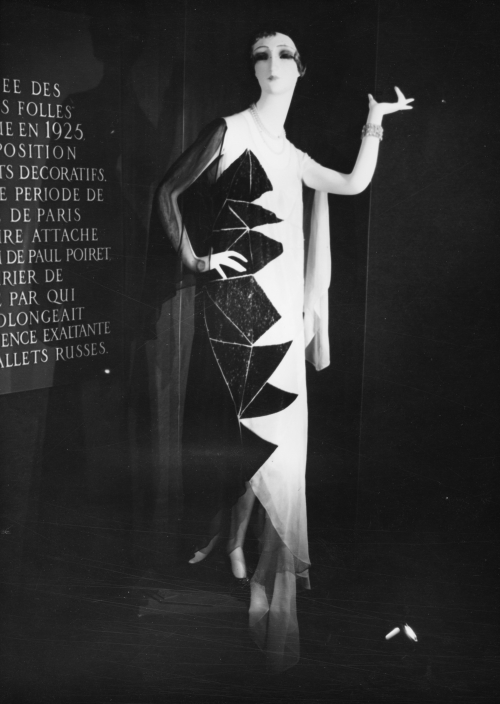
Printemps, department store and ambassador of French elegance, although far from a fashion museum, organises a chronological couture exhibition in collaboration with the Union des Arts du Costume.
Many great names entrust some of their most prestigious pieces to the exhibition: Pierre Balmain, Hubert de Givenchy, Nina Ricci, Christian Dior, Jacques Fath, Jean Patou, Schiaparelli, Jeanne Lanvin, Madame Grès, to name but a few.
Against an enchanting backdrop of grey tulle, the event sets out a manifesto of exceptional savoir-faire. It presents 55 mannequins, specially designed for the measurements of the luxury outfits on display. Printemps also prints an artbook brochure featuring artists including Christian Bérard, Gruau and even Colette.
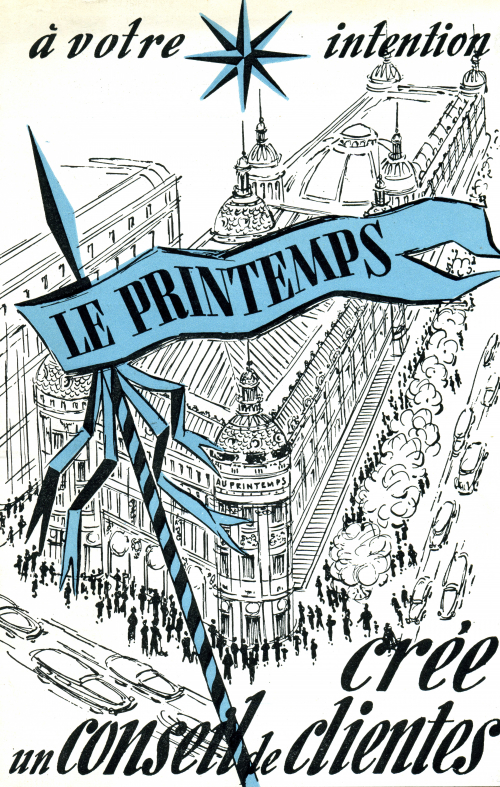
The customer is queen, and Printemps her kingdom; the store provides its clientele with further pampering along with cutting-edge services.
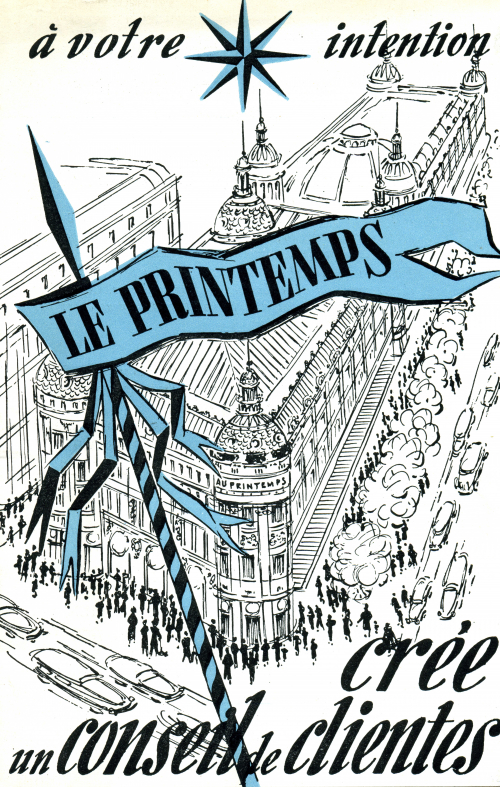
In 1953, Printemps sets up a Customers’ Council to support women's and social associations, as well as store customers. Its goal is to optimise the store’s comfort, services and product range through monthly meetings. A quality certification label, "Printemps Selection", is created for the occasion.
At the end of 1953, the store presents the innovative tele-intelligence, which allows a speaker to answer the questions of Printemps visitors, live from a studio, via a TV set equipped with a microphone and installed at the entrance. An ancestor of digital terminals, this installation is totally cutting-edge in Europe.
It appeals not only to customers seeking information, but also "a large number of spectators intrigued by the mystery of the system", explains Printania, Printemps’ magazine.
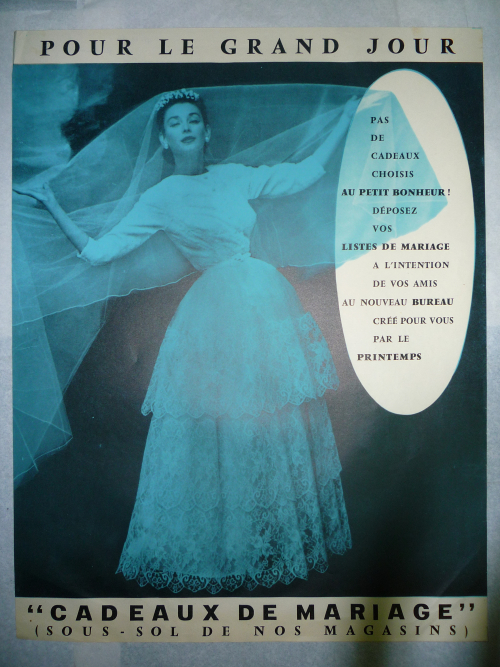
Unprecedented in France, the brand new "wedding list" service is a success.

Printemps helps shape the most unforgettable weddings. The happy couple can now have everything they need to live happily ever after.
Printemps is the first store to import the "wedding list" concept from the United States: adding another feather to its cap. This exclusive service includes a dedicated salesgirl who assists customers in pre-selecting a list of wedding gifts across all departments, including wedding gowns.
The offer carries a strong appeal and quickly proves successful. Over 100 lists are submitted the first year. In 1968, the store receives 2,000 lists. In 1970, 4,000 lists definitely and positively disrupt the household market. This continuous growth compels Printemps to launch its Boutique Blanche in 1983, a new showroom concept exclusively dedicated to weddings.
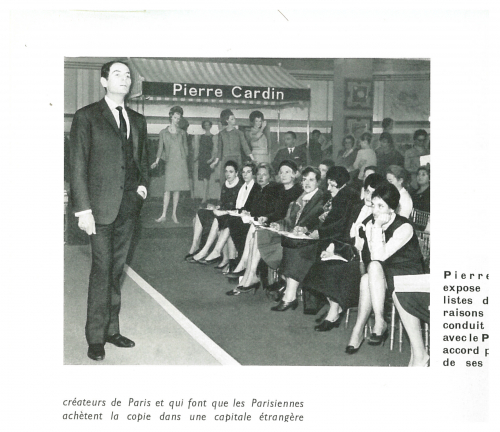
Fashion designer Pierre Cardin creates a collection for Printemps, a revolution in the fashion world.
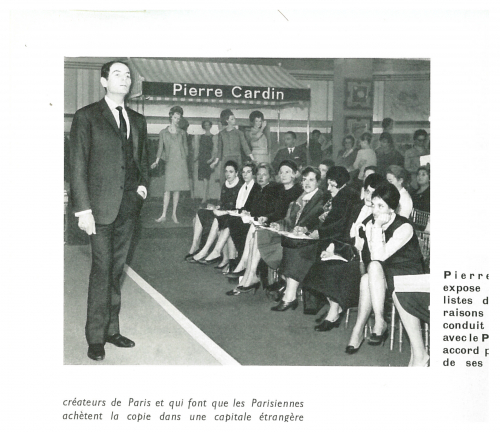
After Paul Poiret in 1933, another designer, Pierre Cardin, enters the Maison Printemps. At that time, although designer pieces are sold for reproduction to foreign department stores, luxury designers protect their exclusivity in France. As a result, some French women will cross borders to buy a French creation.
So, when Pierre Cardin agrees to open a shop inside the department store to offer exclusive ready-to-wear pieces, this is frontpage news. The collaboration is widely covered in the press and faces disapproval from the Chambre Syndicale de la Couture (the French fashion union).
This reaction confirms the importance of the event in terms of style, range and advertising. The project is an immediate success and allows Printemps to attract new customers who have been unfamiliar with department stores until now.

Printemps accompanies tourists at the new Paris-Orly airport and the SS France cruise ship.
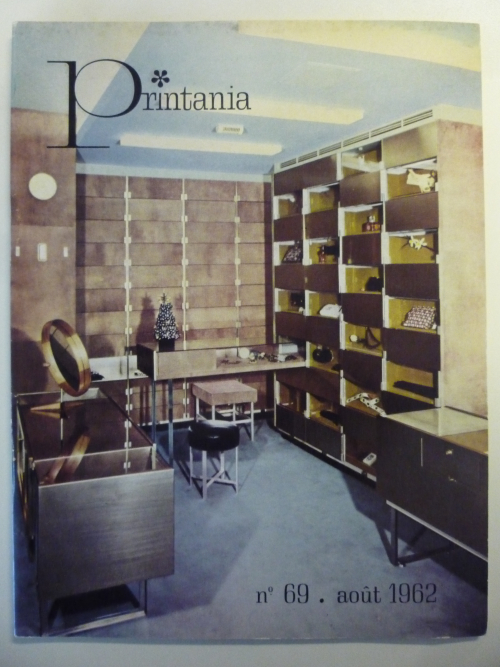
In terms of surface area, these are the two smallest Printemps stores, but both are huge in terms of impact and international recognition. Printemps now maintains its customer proximity by coming with them on their travels.
Printemps is the only shop in the new Orly airport and aboard the SS France ocean liner to offer new products along with a specially adapted traveller selection.
In Orly, the 50m² store features men’s fashion items for those accustomed to business travel, prestigious labels, and the "practical" products that are often forgotten when travelling, such as umbrellas.
The SS France boasts a 100m² store, featuring both French luxury and everyday products such as face creams. An offer adapted to passengers with a generally elevated buying power.

A ski slope on Printemps’ roof for high-speed fun!

A nylon mat mounted on wire mesh creates a 40-metre-long slope, with the Eiffel Tower serving as a backdrop. In 1964, Printemps inaugurates its own ski slope with the mayor of Chamonix and many distinguished instructors in attendance.
The slope on the store’s terrace is open to the public. That first winter, 150 amateurs try it out under the curious gaze of thousands of spectators. The upcoming Olympic Winter Games (Grenoble, 1968), bolster the creation of new alpine resorts and infrastructure. It’s the subject on everyone’s lips, and Printemps is keen to stay on-trend.
Making a comeback in the following years, the Parisian ski slope attracts ever more visitors, including the champion Marielle Goitschel in 1968.
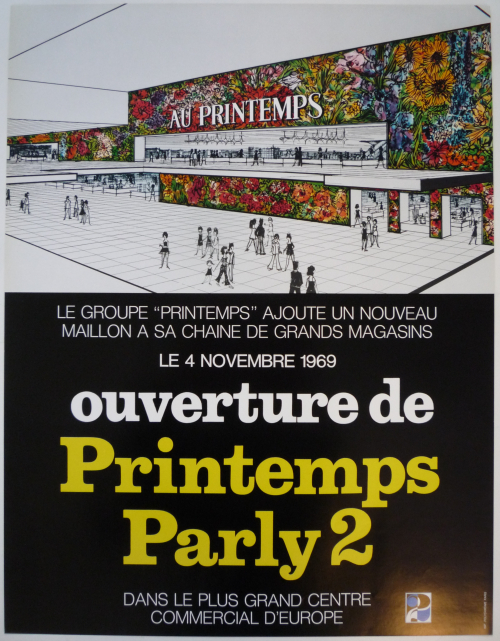
Nation, Parly 2, Vélizy 2: as trendy as ever, Printemps follows its customers in the booming outskirts of Paris.
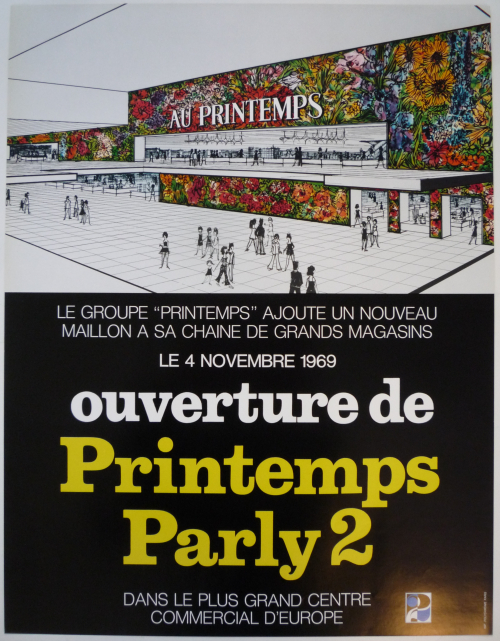
Printemps adapts to an evolving urban landscape. In 1964, as the neighbourhood of eastern Paris develops, Printemps opens a new store near the Place de la Nation. The contemporary building features all the brand’s departments over 10 floors.
It is the first new department store in Paris in 65 years, featuring a unique 2,000m² underground food court. It is the largest and most luxurious of its kind in the capital. Furthermore, customers can directly access the car park from all floors by lift.
A few years later, Printemps crosses the ring road. The Parisian suburbs have gained an average of 180,000 inhabitants a year, whose perceptible increase in buying power leads to the inauguration of Parly 2, the first regional shopping centre.
In 1972, Vélizy 2 is launched. Printemps immediately sees the potential of these shopping centres and is the first department store to participate in the suburban revolution.
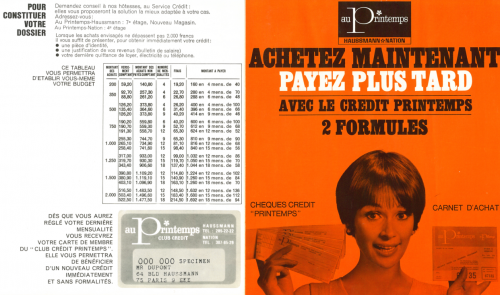
Welcome to the club! The new Printemps Card brings benefits, ease of payment and greater loyalty.

In 1968, Printemps launches its Printemps Card to forge even-closer customer relationships. It can be used in all Printemps’ stores and facilitates purchases via a simple signature plus credit options. Its purpose is to retain the most regular visitors.
In 1973, all card holders join the Printemps Club, which offers extensive benefits: special deals, discounts, fashion and beauty tips, as well as elite services.
This marketing operation is all the more effective for its directly targeted marketing campaign. The card is above all a valuable tool Printemps can use to study and analyse purchasing behaviour in order to adapt its offer to individual customer expectations.
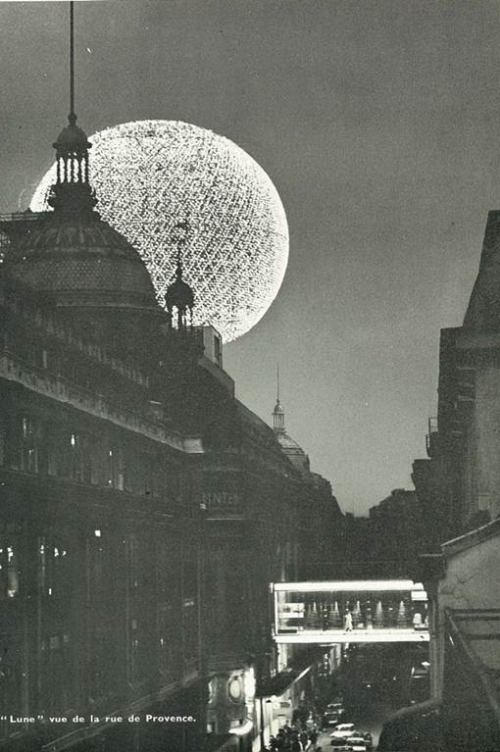
Rocket rotunda and a full moon on the terrace: Printemps enters the Space Age.

Ever-faithful to its now long tradition, Printemps never shies away from extravagant displays. Once again, it proves itself a trendsetter.
In 1968, a year before man first walked on the moon, one of the corner turrets of the Paris store transforms into a phenomenal 60-metre-high space rocket. The metal-framed Saturn V replica is the star of the “Féerie de l’Espace” ("Enchanted Space3) toy campaign.
The following year, the moon itself lands on the department store’s terrace, in a dreamlike Christmas holidays allegory. The astonishing 25.5-metre-wide creation is illuminated by 16,800 bulbs and visible all over the city.
Both displays are the result of high-flying technical achievement.

A dazzling revival: the 3,185 original glass panels of the Printemps Haussmann’s cupola regain their rightful place.
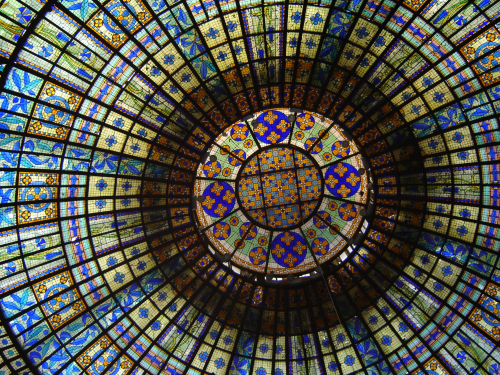
Hidden away for decades in the store’s stock rooms, the 3,125 coloured glass panels of the Haussmann flagship’s dome regain their original place, majestically adorning the newly renovated Printemps restaurant.
Following the devastating fire in 1921, the master glassmaker Brière faithfully recreated this incredible glass dome originally produced in 1910. A masterpiece with a striking floral decoration, the dome is 16m high, with a diameter of 20m. It was dismantled in 1939 to protect it from possible bombing, but also to increase the daylight entering the halls at a time when electricity was still quite expensive.
In 1972, Printemps decided to reinstall the panes and revive its lustre and function. The store called upon Brière’s grandson to reassemble the panels using the original plans preserved in the family workshop.
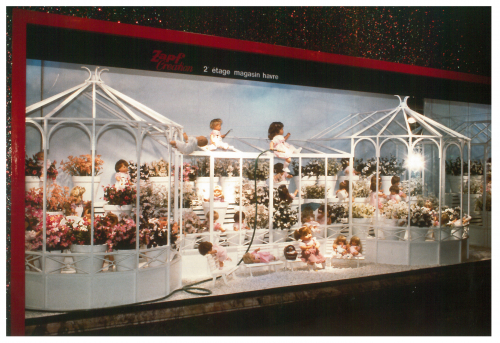
Puppets bring life to the Christmas window displays—a new tradition is born.
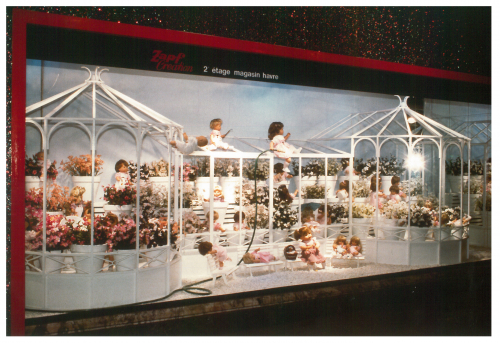
Robin Hood is the box office hit of the season and is brought to life in Printemps’ Christmas window displays. The puppeteer Jean-Claude Dehix is chosen to pull the strings. He is one of a few specialists—until then still mainly practicing his art on stage—familiar with the opening acts of Brassens, Juliette Greco or Barbara. The experience and innovation are unprecedented, with tests first run in the department store’s basement. The result is pure magic. And it continues to charm new visitors each year—the artist has since brought to life every Printemps Christmas. That’s around 260 windows!
From an army of Barbie dolls swimming in a pool to Karl Lagerfeld miniatures in an enchanted Paris by night, Dehix’s characters are a unanimous success to this day. Since the success of his creations for Printemps, other department stores have even taken him on board for their own displays.
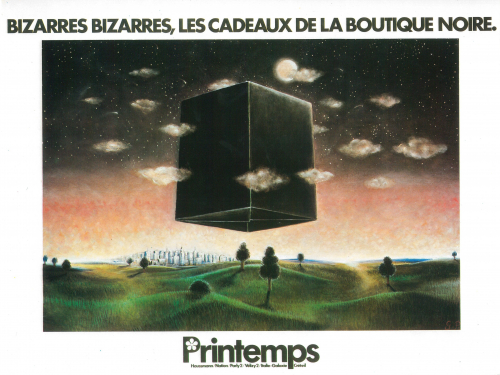
Inauguration of the Boutique Noire dedicated to Christmas gifts—Printemps wraps creativity.
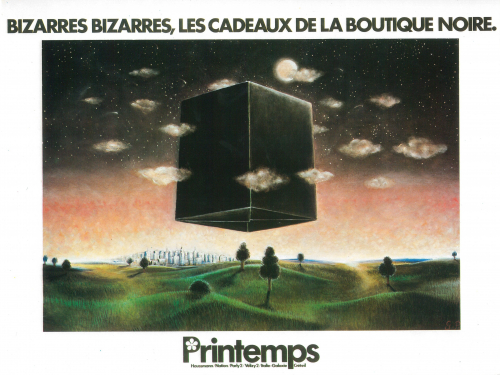
In 1972, after having run the Primavera workshop for several decades, Colette Gueden retires. It marks the end of a beautiful chapter in the store’s history, and the beginning of a new one. A shop within a shop, the new Boutique Noire concept is a treasure trove of gifts. Each year, during the Christmas season, a selection of the most modern and in-style gifts, objects and accessories can be found on offer there.
This innovation is also a result of Printemps’ push to make its offer clearer to the customer. Lifestyle and home here, popup shop there. The boutique brings together instant desires, a kind of legacy to the annual Primavera fairs with their selected share of surprises and special offers to give to or offer oneself, but only for a very short time.
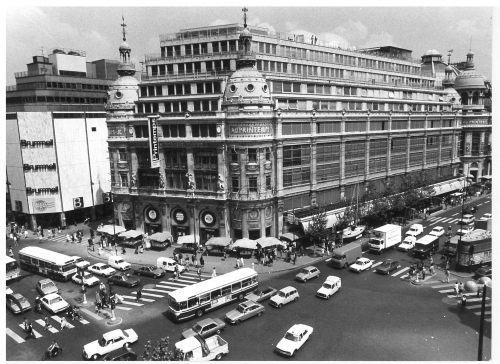
A memorable event: the facade of Printemps Men is listed as a Historical Monument.

The Superior Commission of Historical Monuments, in charge of the preservation and promotion of French architectural heritage, decides to include the facade and roofs of Printemps Men on its list of historical monuments. It is the first department store to be listed.
The reason behind the recognition is the renewed interest for this building, considered as a true model showpiece for its time. Designed by the architect Paul Sédille in 1882, it established itself as the very first modern commercial building. A pioneer in terms of materials—particularly glass and iron (4,500 tonnes of it)—the building was a forerunner of the Eiffel Tower.
Now listed, the building cannot undergo any kind of modification without the approval of the Bâtiments de France. This rule applies to the facade itself, as well as to any other construction within a 100-meter radius. Printemps’ heritage is officially recognised and, as is the case for the other great Parisian monuments, tours are regularly organised.
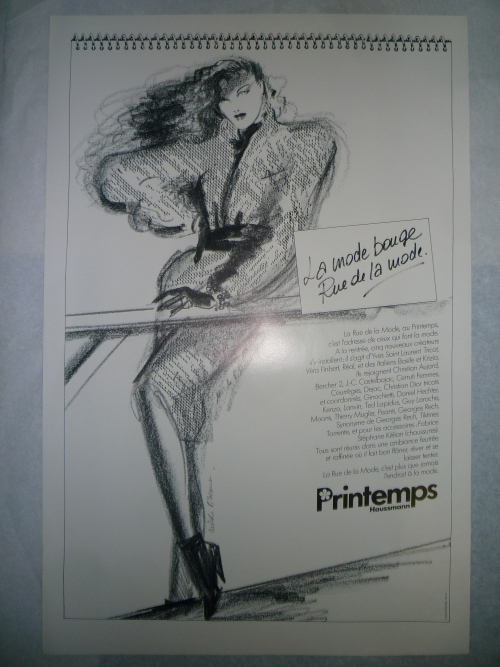
The creation of the "Rue de la Mode", a whole area dedicated to Printemps’ featured designers.

Ready-to-wear fashion is born in the 1970s, and their designers are the new stars of elegance. Haute Couture is now considered prestigious craftsmanship reserved for the elite. Of course, Printemps celebrated this new era by bringing this more affordable fashion to the public. As a result, its own collections become more and more fashionable, as the advertisements of the time show.
A "Rue de la Mode" is launched within the department store. This distinct and refined area is where you’ll find the greatest names in fashion—Christian Aujard, Bercher, JC Castelbajac, Cerruti Women, Courrèges, Dejac, Christian Dior, Louis Féraud, Ginocchietti, Daniel Hechter, Kenzo, Lanvin, Ted Lapidus, Guy Laroche, Synonyme by Georges Rech, Tiktiner, Torrente, Stephane Kélian, and Yves Saint Laurent, of course. Only a few of these names still exist today in the fashion industry, but all represent the spirit of the 1970s—blending style and everyday practicality.
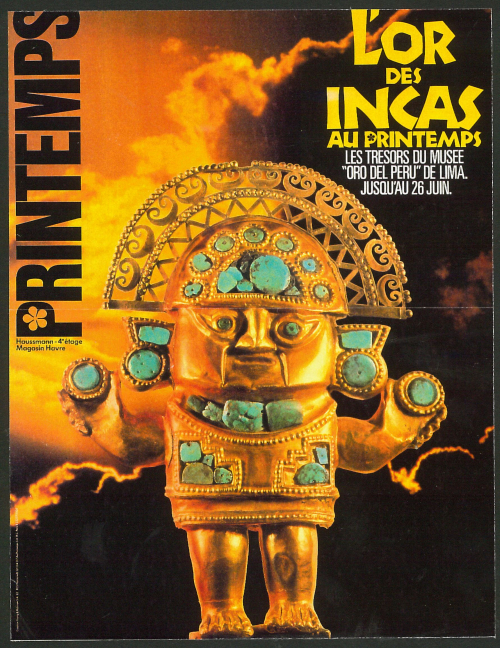
Major cultural and international exhibitions—Printemps promotes the arts for all.
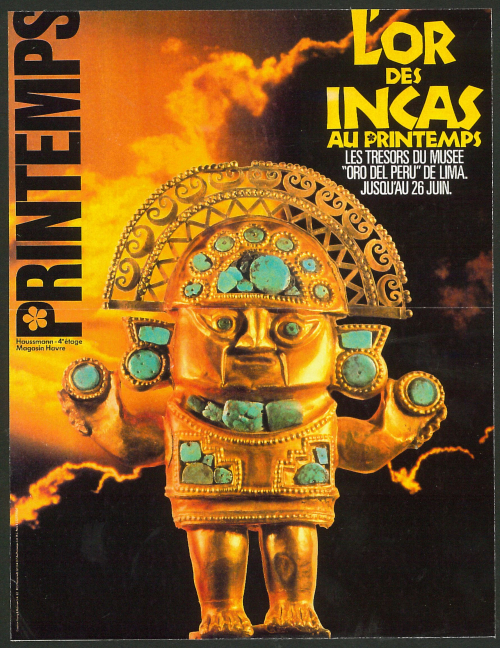
World travel is not yet within everyone’s reach. But this doesn't hold Printemps back from inviting the world to come to it, marking the dawn of an era of major exhibitions hosted within its walls, granting the public access to some of the world’s most precious cultural legacies. One of the best examples of this is the exhibition dedicated to the statues from the mausoleum of Qin Shi Huang, the first emperor of the Qin Dynasty (221-207 BC)—the same emperor who ordered the construction of the Great Wall.
The event attracts 450,000 visitors within two months. This record is mainly due thanks to the seven magnificent life-size terracotta warrior statues that become the stars of the show. The exhibition also features numerous rare ancient objects as well as official copies controlled by the Chinese Archaeological Services, displayed in all their splendour.
Another exceptional exhibition is that dedicated to pre-Columbian objects and jewellery on loan from the Lima museum in Peru.
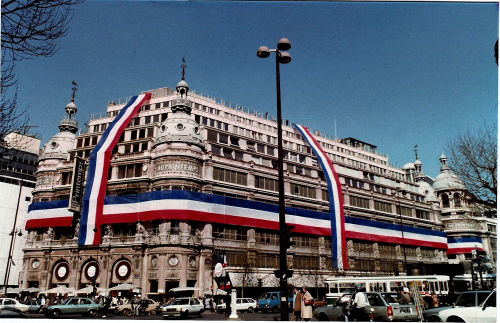
Printemps promotes Made in France with its French Challenge.
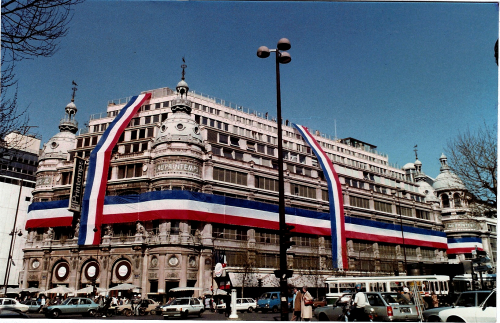
Printemps is dedicated to supporting Made in France production, a major part of the French economy. As such, the French Challenge event is held in April with a clear goal of promoting products manufactured in France.
In order to achieve this, a series of initiatives are put in place such as the optimisation of window displays to increase the visibility of French products, targeted promotional campaigns, limiting foreign imports with the support of the brand’s suppliers, offering the use of Printemps’ infrastructure and central purchasing operation to selected designers to facilitate exports, and more.
What’s clear is that this new strategy is not about protectionism, as evidenced by the great exhibitions dedicated to foreign cultures, customs and objects. It is rather about a desire to give French creativity, ideas and products the opportunity to rise and shine on the national and international stage.

Printemps the world over: the department store settles everywhere from Tokyo and Singapore to Denver and Jeddah.
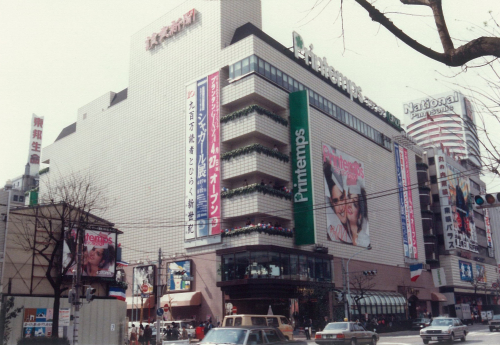
After settling throughout France, Printemps has its eye on a new location—the entire world.
Within a few years and through affiliated stores, the brand opens new doors from East to West. Four stores in Japan (Tokyo, Kobe, Sapporo and Osaka), one in Singapore, another in Kuala Lumpur in Malaysia, one in Jeddah in Saudi Arabia, and in Denver in the United States. Each time, the offer is adapted, balanced between French design—dear to Printemps’ heart—and local needs and desires.
For example, Printemps Kuala Lumpur is equipped with a gas station, and the Japanese stores have a cafeteria on each floor. In Denver, Brummell is promoted, where the concept of men’s fashion in a department store is still unheard of. Meanwhile, in Singapore, Printemps’ phonetic pronunciation “Pram Tom” is displayed on billboards with gentle humour.
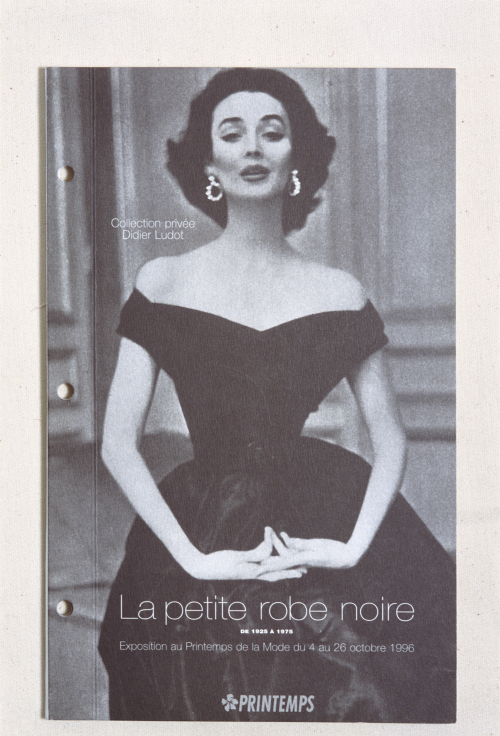
Printemps exhibits the “Little Black Dress”, a symbol of Parisian elegance and glamour.

The poster child for Parisian elegance, the little black dress is the new headliner for the store. A dedicated exhibition tells the story of this important character of French couture history.
The exhibition features original 1930-1970 designs by Chanel, Balenciaga, Dior, Givenchy and even Madame Grès, selected by Didier Ludot, a passionate collector and fashion expert.
It also presents accessories manufactured by prestigious ateliers and suppliers of the greatest designers—Lesage embroideries, tailored shoes designed by the bootmaker Massaro, Agnelle gloves, Robert Goossens jewellery, Boudier bags and Philippe Model hats.
The department store is turned into a Grande Maison of French Chic, promoting fashion, culture and heritage. A display made of 14 little black dresses is created for the occasion, a retro-revival of all trends.

A union for splendour and originality: Christian Lacroix designs wedding dresses for Printemps.
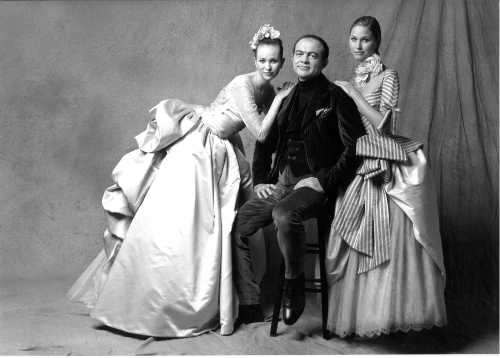
"Affordable, magnificent, sumptuous," writes Olivia de Lamberterie for ELLE magazine, describing the eight new wedding dresses Christian Lacroix has created especially for Printemps. Lacroix is the first fashion designer to take on this type of work for a department store.
The event is a great success—it must be said that these festive and romantic designs made of lace, silk and Georgette sheer fabrics are offered at affordable prices. All women can now dream of wearing haute couture.
"It’s a special day, a day full of joy and emotion that every little girl dreams of," Christian Lacroix says. “I am proud to be able to play a role in enabling anyone, from a provincial shepherd to a fairy-tale princess, to have their dream dress.” Indeed, he embraces this role with the virtuosity he’s known for.

Sales clerks on roller-skates equipped with webcams guide online customers through the store.
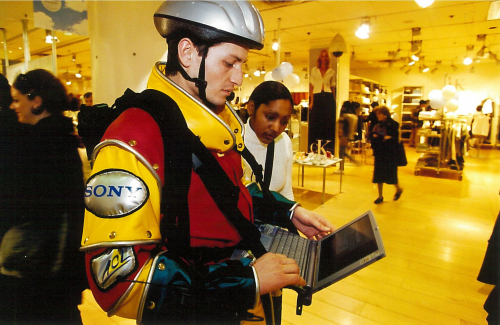
Ever searching for new ways of reaching out to its customers, Printemps invents the Webcamers. Sales clerks equipped with webcams, mobile phones... and rollerblades guide and advise online customers in real time through the aisles while they quietly sit behind their computers at home. Online shopping is now fun and a “real” experience!
This cutting-edge service and first e-commerce experience for a French department store does not go unnoticed. The Webcamers become a new attraction for Printemps’ visitors, who are intrigued and entertained by these futuristic figures. But, most of all, they satisfy customers from all around the world who can now shop for French elegance as if they were in the store themselves—almost.
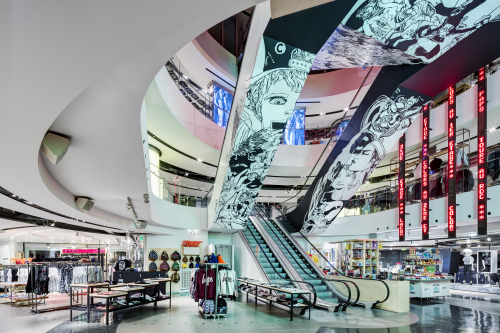
Sportsmanship at its best—the inauguration of the lifestyle concept store Citadium.

Sportswear leaves the stadium to take on the streets, answering the growing demand from younger generations for outfits adapted to their lifestyle and sense of expression.
Printemps was able to sense the commercial potential of this growing trend from very early on, always following and tracking the latest trends. Citadium is inaugurated in 2000, a temple of sport and streetwear. Located on Rue de Caumartin, the unprecedented concept store covers 6,000m² over four floors—the largest of its kind in Paris.
The different departments feature the most popular brands and aim to showcase strong and dynamic collections. It is a high-flying, stylistic exercise, an enjoyable combination of efficiency and creativity, quickly making Citadium a reference for the market.
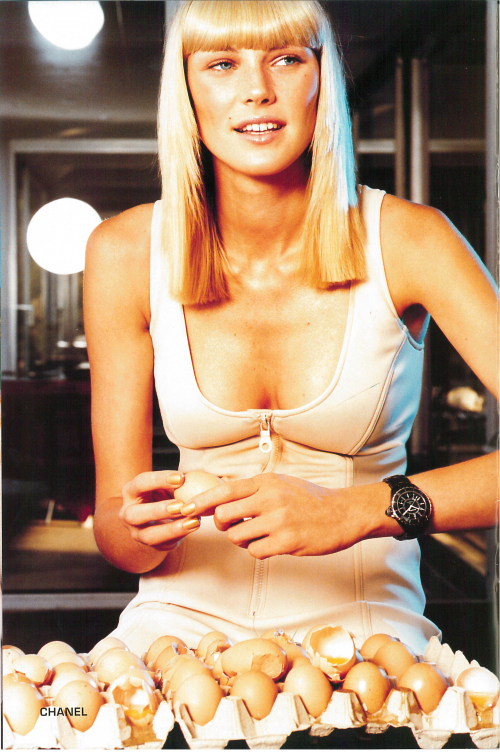
The pinnacle of luxury—high-end jewellery and exceptional accessories on the same prestigious floor.
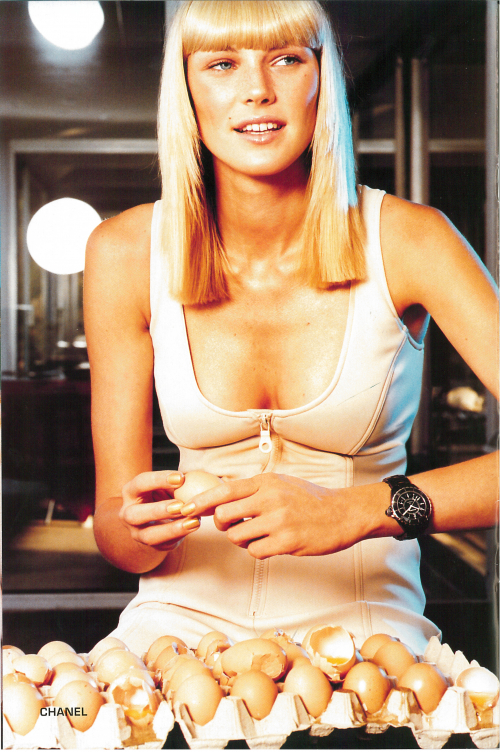
As the luxury market booms, supported by major global brands, Printemps makes a successful gamble by dedicating its entire first floor to these high-end goods. Refined and welcoming, the 3,000m² area stages the most prestigious jewellery, watch, accessory and ready-to-wear fashion brands.
For the first time, Place Vendome and Avenue Montaigne stand alongside each other, unified by the department store in a setting of international acclaim where excellence prevails. Once again, the idea is innovative and unique, while remaining faithful to Printemps’ elegance and high-quality principles—harking back to 1933, when the store welcomed the great designer Paul Poiret.

Partnerships, exclusivities, events: the greatest brands join Printemps’ creative energy.

Fashion is more alive than ever. Now belonging to large international groups, the greatest brands intend to make themselves known. Marketing and merchandising have become critical elements for mass communication. Printemps is part of the game and quickly becomes the preferred business partner for Prada, Burberry, Lanvin, Chanel and Vuitton.
Prestigious collaborations come one after another—grandiose spectacles, live exhilarating and surprising adventures at a time when uniformity is gaining ground. From the windows to the atrium, across every floor, the store hosts regular entertainment events and happenings for its visitors. Christmas celebrations, pop-up stores, exclusive private showcases with creators, capsule collections, playful and theatrical stagings—everything is possible and respects the modern creativity that still defines the department store to this day.
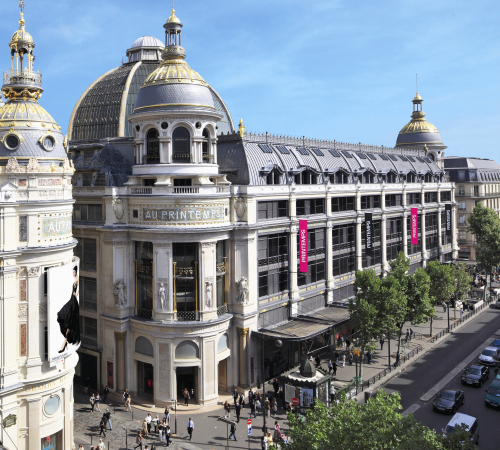
Faithfully restored, Printemps Haussmann’s facades show off their history and magic.
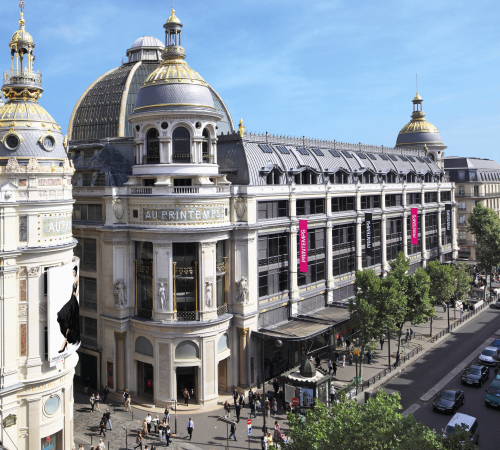
The future is for reinvention, but its role is also to preserve memories—that guarantees the heritage of emotions, identity and diversity that makes up the Printemps story. This is the goal of the renovation of Printemps Haussmann’s facades, masterpieces of the 19th (1882) and 20th (1910) centuries. The objective is exceptional and delicate—the department store must stay open throughout the duration of the renovations. Gabor Mester de Paradj, Chief Architect of Historical Monuments, is appointed to the task. A great diversity of craftsmen also work on the project, including stonemasons, metalworkers, mosaicists, marble workers, glassmakers and gilders.
Ready for restoration: 14,000m² of facades, 4,700m² of stonework, 6,200m² of glass and iron, and many other fine ornaments and decorations. Once completed, this huge work is accentuated through innovative and ingenious lighting. From now on, miniature, durable and efficient LEDs highlight the majestic Printemps’ buildings.
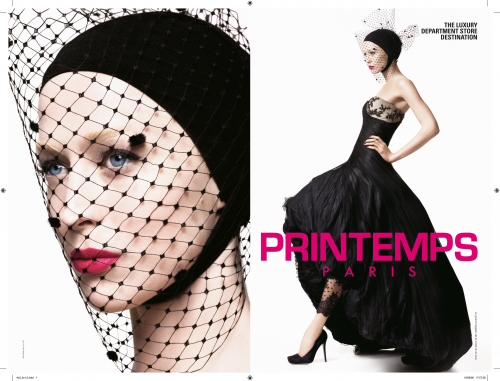
A visionary genius and creative mastermind, Stephen Gan creates the new Printemps advertising campaigns.
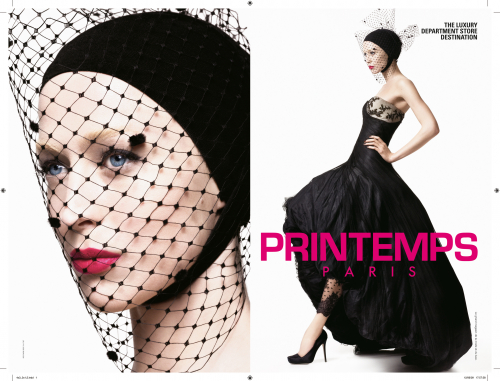
Printemps is a trendsetter and wants people to know it. That’s why, in 2008, it announces a striking new collaboration with Stephen Gan, undisputed star of audaciously chic communication and fashion. On top of being Artistic Director for V magazine, the niche fanzine Visionaire, Harper's Bazaar and CR—the recently created magazine by star designer Carine Roitfeld—Stephen Gan also directs V Agency, a creative and advertising agency specialised in prestigious brands.
He is the man with the talent for the job. His cutting-edge vision, close relationship with the greatest photographers such as Mario Testino and David Sims, and perfect knowledge of the fashion’s guiding principles, allow him to give Printemps its very own original identity—that of a brand ahead of its time.
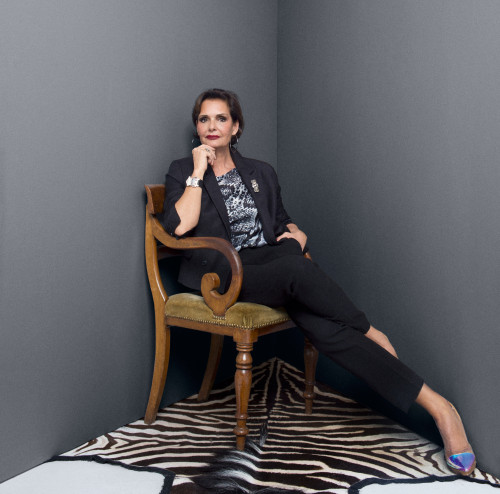
A true talent spotter: Maria Luisa, Printemps’ Fashion Editor, sets the tone.
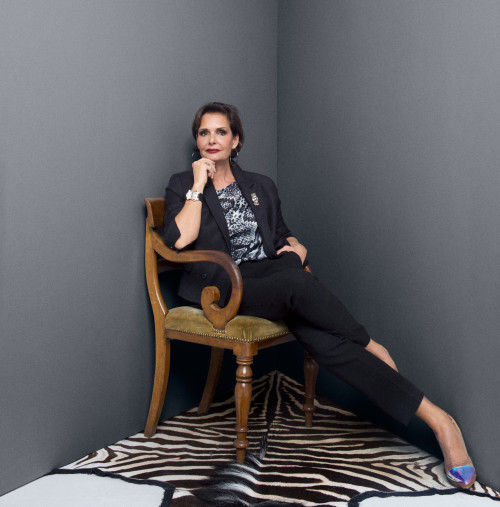
The arrival of Maria Luisa as Printemps’ Fashion Editor is an important event. Her boutique, inaugurated in 1988, has hosted emerging creators and memorable creations by Martin Margiela, Alexander McQueen, John Galliano, Martine Sitbon, Helmut Lang and many others who have contributed to fashion history.
Maria Luisa is passionate and endowed with an unparalleled flair for new talent. Her space in the department store, as well as her sharp eye for fashion, allow the brand to keep setting trends.
Indeed, thanks to Maria Luisa, great names such as Christopher Kane, JW Anderson, Haider Ackerman, Cedric Charlier, Victoria Beckham and the footwear designer Manolo Blahnik are revealed to the public. Once again, Printemps is the first store daring to defend these exacting and sharp styles.

Printemps Haussmann creates the largest ever shopping space dedicated to accessories: Luxury & Accessories by Yabu Pushelberg.

The new Luxury & Accessories section of Printemps Mode is built on three levels crowned with a stairwell adorned entirely in glass and iron offering the perfect place for exceptional products and special events.
What makes it special? The space was created by none other than the famous architectural firm Yabu Pushelberg, which designed it as a modern interpretation of the original building (with open floors under a central nave). The decor and furniture belong entirely to Printemps, with various labels integrating seamlessly into the space.
This "concept store in a store" features the finest jewellery, watches, leather goods and other accessories, signed by the most prestigious international designers. The products take centre stage, even more so than usual, thanks to the perfectly coherent and elegant decor.
The result is an unprecedented shopping experience for a department store, a place for enjoyment but also to experience culture, architectural excellence and know-how, and all of this completed by personalised services and VIP lounges.
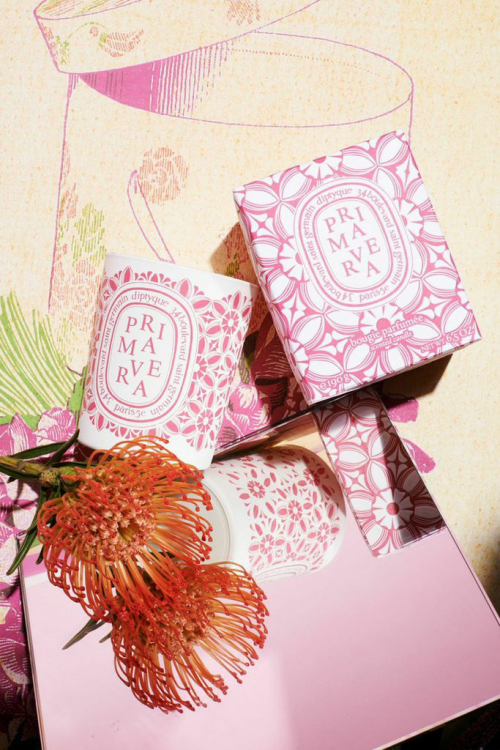
Printemps declares perfume an art and creates La Belle Parfumerie.
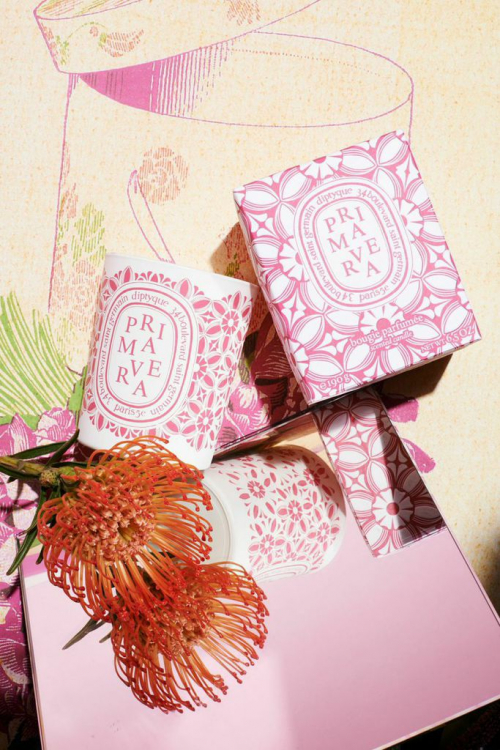
Why did Printemps come up with La Belle Parfumerie? Because it nurtures the spirit of pleasure, the sense of excellence and the experience of rarity. Spread across the ground floor of Printemps Beauty & Home, this new area is a testament to the most refined luxury.
Moving through the aisles, one can find exclusive fragrances and concepts such as Hermès Beauty, Diptyque and Choc Noir by Serge Lutens, but also, nestled at its heart, the Scent Room, a place dedicated to the most precious scents.
This is the haute-couture department of perfumes where we find, among others, Frederic Malle’s fragrances, Tom Ford Private Blend and La Collection Privée by Christian Dior.
All the featured luxury houses are faithful to the Belle Parfumerie Manifesto, a quality policy inspired by the most passionate consumers and initiated by the department store (which, from its opening, was already offering its own collections of Eau de Cologne).
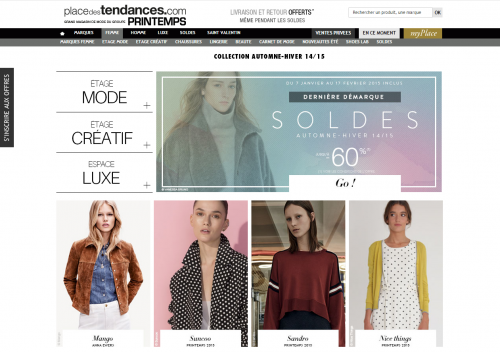
Place des Tendances: online fashion as creative and prestigious as in the real world.

At a time when e-commerce is booming, Printemps acquired Place des Tendances, a website created in 2009, and a leader in online fashion retail. It came with 200 top labels and services including internet one-day delivery, personal shoppers and alterations. Thanks to an integrated photo studio, the website also provides a high-quality display of modernity and charm.
An expert in elegance, Printemps continues to deploy that sensibility today across its universe with the same sense of affordable chic fashion. Now assured in the digital world, too, Place des Tendances allows everyone to easily access the best trends of today and tomorrow. And with 80% growth each year, success is already here.
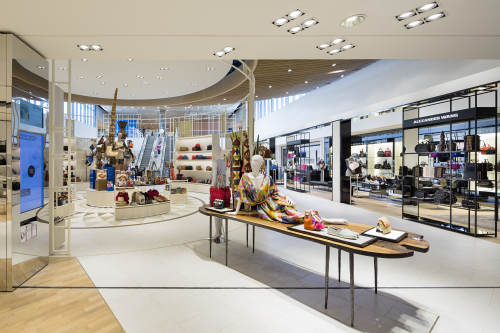
Inaugurations in Paris and Marseille—Printemps enters a new era of growth.
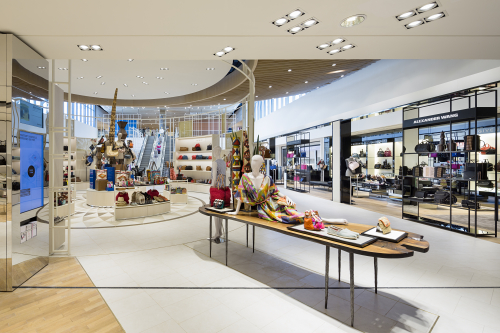
It had been more than 30 years since Printemps acquired or designed a new store. In 2014, the brand finally aspired for more.
Becoming the first department store in the world to partner with a museum, Printemps du Louvre opens under the iconic pyramid of one of the world’s most famous museums. The prestigious 2,500m² area was designed by the Antonio Citterio & Partners studio. It features a quintessence of accessories, jewellery, leather goods, beauty products and gifts. Lifestyle items have become artworks.
In 2014, Printemps also opened a second 6,000m² store in Marseille, located in the brand new and luxurious shopping centre Les Terrasses du Port. These contemporary-designed buildings are thought to become a new international attraction, an extension of the MuCEM museum located nearby.
In both cases, Printemps has chosen a tailor-made approach for its stories, one in harmony with their specific visual environments.
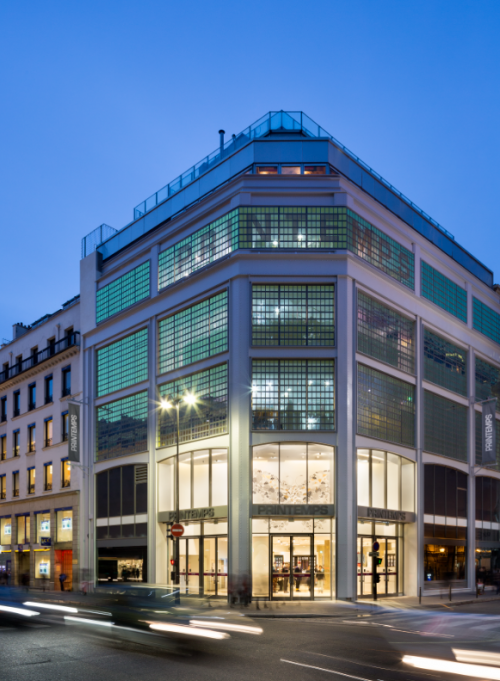
The new Printemps Men’s façade is tailor-made with contemporary elegance.
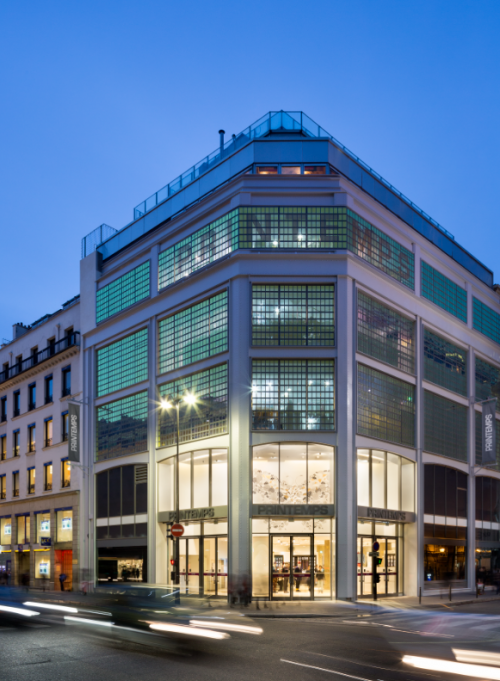
Complement the charisma of the adjoining historic buildings while creating something new—this is the challenge accepted by the Antonio Citterio and Partners studio, which designed the brand-new façade of the Printemps Men’s building.
The original idea uses a neo-industrial style to create a "language of consistency" with the first two buildings.
Hence the choice of small, highly reflective glass tiles with a golden reflection that echoes elements of Art Nouveau. These references and luminous architecture allow the Boulevard Haussmann stores to find a spectacular coherence.
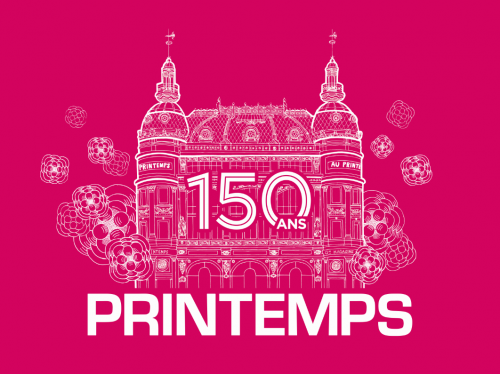
Yesterday, today, tomorrow: 150 years old and Printemps still has the most innovative and creative future ahead.

Today more than ever, and tomorrow more than yesterday: Printemps turns 150 and is still in the prime of its life, a trendsetter, talent spotter, lifestyle forerunner, the beating heart of the international Paris. It’s time for a monumental birthday party!
The program of this unique and audacious festival includes 1,000 exclusive products designed by nearly 400 brands, window displays staged by renowned artists, surprising sweets and delicacies, along with thousands of flowers. Pleasure is put centre stage and a promising future is celebrated.
At the beginning of the 21st century, Printemps remains faithful to itself more than ever before. Continuing to enchant the art of shopping, it intends to stay this way for the next 150 years—the ultimate reference for French elegance.

Printemps unveils its social responsibility and environmental strategy.
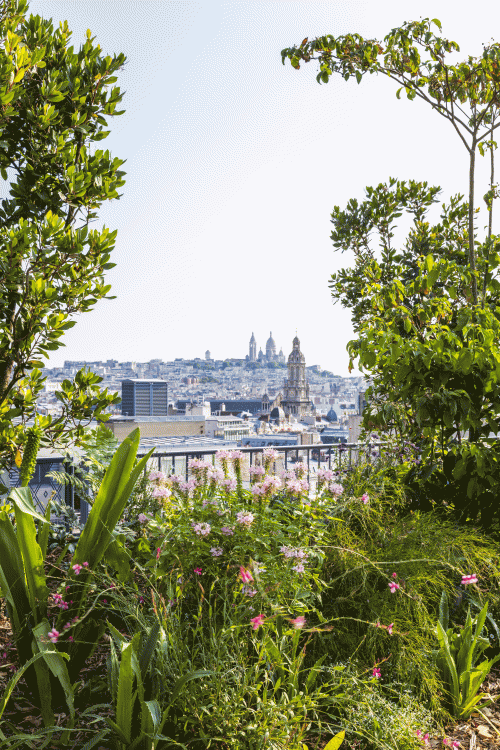
Printemps Group's Social and Environmental Responsibility strategy responds to social, environmental and corporate governance challenges by being a committed economic player, as well as by combining sustainability and ambition, legacy and prospects.
Because it aims to be a "creator of unique, positive and lasting experiences", Printemps deploys a strategy featuring three key pillars: "A Responsible Group" that responds to governance and environmental challenges; "An Inspiring Trendsetter" that demands the best for its clients and visitors by promoting ethical brands and supporting creativity; and, finally, "A Thoughtful Employer" that contributes to the development of each and every employee.
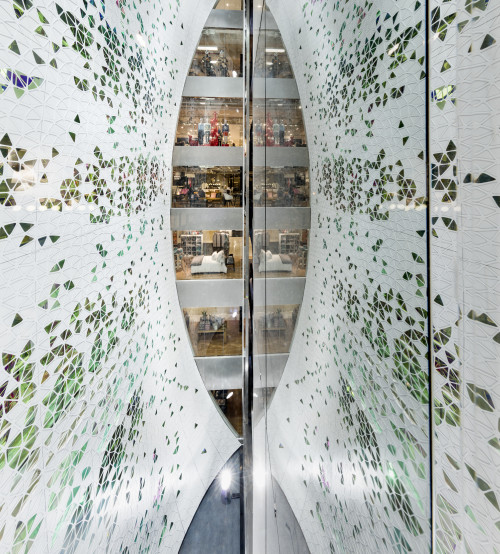
The Sail, a monumental work by Yabu Pushelberg, transforms the verticality of Printemps Haussmann’s historic building.
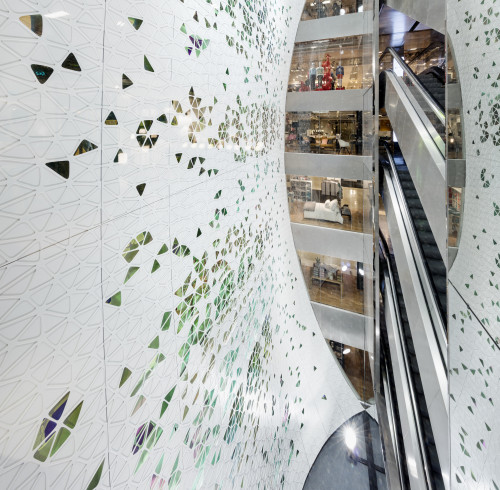
The installation of The Sail, a monumental work by the architecture firm Yabu Pushelberg, spans all floors at the heart of the historic flagship store. A tribute to Printemps’ historic heritage, this new central atrium combines the concepts of movement and modernity. Its exceptional verticality guarantees easy circulation and commercial optimisation of the 10 floors, as well as becoming a strong and unifying symbol for the store.
To echo Printemps Haussmann’s historic cupolas, Yabu Pushelberg, creator of the Luxury & Accessory area and of the Printemps de la Mode’s atrium, invented the vertical dome! The famous architecture firm also created an exclusive ornamental pattern—hemstitched aluminium petals offer a view over the stunning and contemporary dichroic glass-stained glass dome.
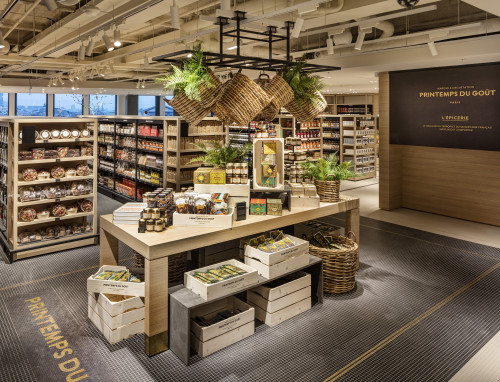
Inauguration of Printemps Haussmann’s Printemps du Goût, a new concept wholly dedicated to French gastronomy.
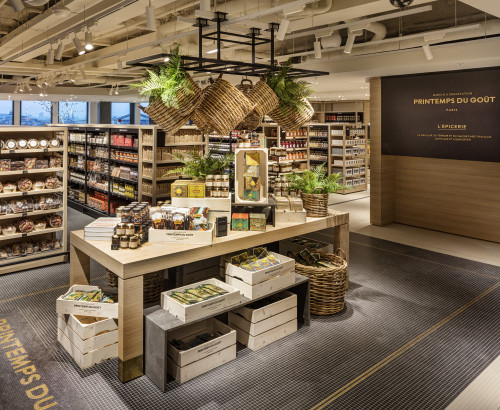
Printemps takes the audacious risk to dedicate its new concept exclusively to French gastronomy. Installed on the top floors of the new Printemps Men, it allows customers to enjoy a breath-taking 360-degree view of Paris.
The Marché dans le Ciel (Market in the sky) offers French products and works together with the main players of French gastronomy, its artisans and chefs.
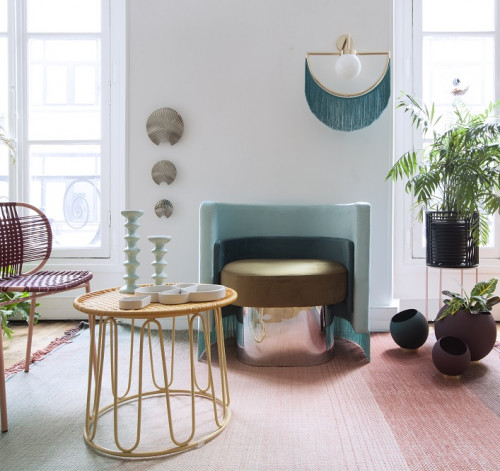
Printemps pursues its omnichannel strategy by acquiring Made In Design, a European leader for online design.
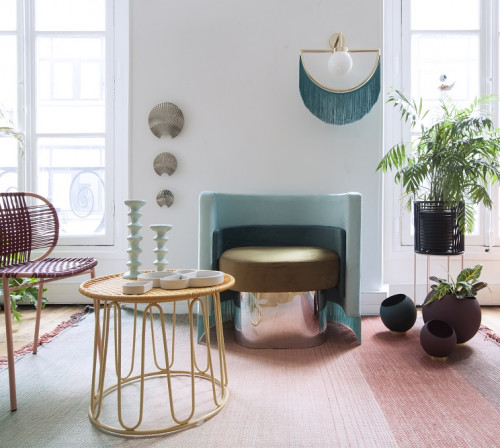
Made In Design is a leading European online retailer of designer furniture, lighting and decoration labels for individuals and professionals. This acquisition is part of Printemps' growth and positioning strategy as a key player in the omnichannel distribution of luxury labels, lifestyle and fashion.
Made In Design was founded in 1999 by Catherine Colin, a human resources manager passionate about decoration. Her ambition? To make design accessible and give everyone the opportunity to afford beautiful design.

Printemps unveils its new e-commerce printemps.com
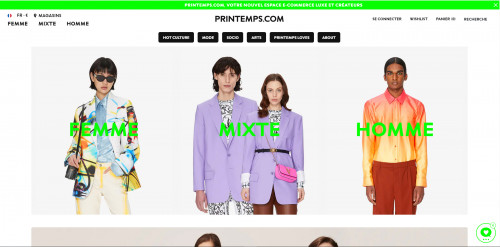
Printemps unveils its new e-commerce space dedicated to the luxury industry and its top designers. Breaking with the traditional rules and stereotypes based on age, gender or physical appearance, the new site takes an inclusive and welcoming approach: PRINTEMPS.COM
The printempsfrance.com site has since merged with the printemps.com e-commerce site to offer a unique online experience with an enhanced customer journey.
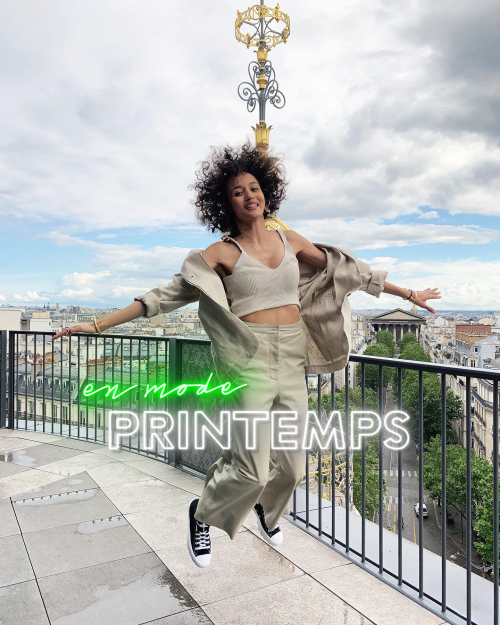
Printemps launches "En Mode Printemps", its first regular and editorial live shopping series
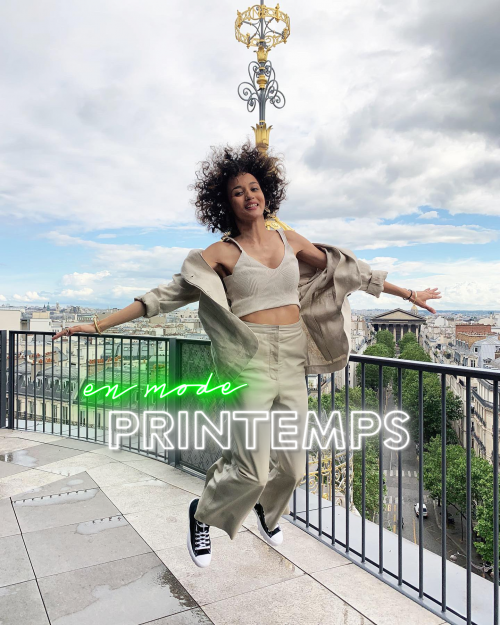
Printemps launches "En Mode Printemps", its first regular and editorial live shopping series for a new kind of shopping experience. “En Mode Printemps” is a 20-minute fashion and lifestyle show with a peppy, fresh, joyful, and authentic tone. Hosted by our Printemps personal shoppers, the first episode aired on June 23, 2021.
The live shopping episodes are broadcast live on social media and on printemps.com, where all episodes are available for replay.

Printemps unveiled 1,300 sqm. dedicated to circular fashion : Seventh Heaven "le 7ème ciel"
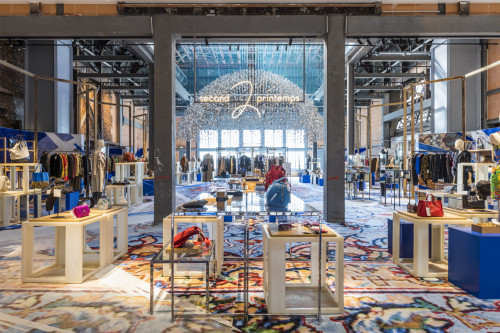
On September 22, 2021, Printemps unveiled 1,300 sqm. dedicated to circular fashion: Seventh Heaven on the seventh floor of Printemps Woman. Though it has remained largely closed to the public for decades, this floor is full of architectural gems and cultural treasures.
The Binet Cupola and Pont d’Argent, two structures recalling the Eiffel tower, were renovated in a minimalist spirit to become the French capital’s largest space dedicated to circular fashion.
This space bathed in natural light and offering a panoramic view of Paris is the backdrop for this unique initiative, which brings together a unique second-hand clothing buy-back service, a carefully curated vintage offer combining luxury and accessibility, and a selection of fashion, skincare and lifestyle brands committed to genuinely responsible approaches like upcycling, art-cycling, repair, customization, and second-hand resale.
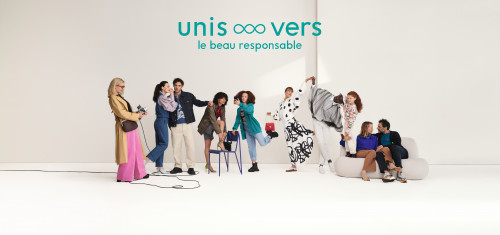
Printemps creates the label "Unis vers le beau responsable"
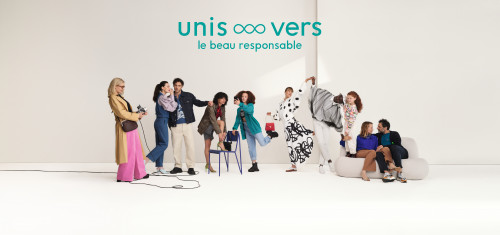
Printemps creates the label "Unis vers le beau responsable" ("United for Responsible Beauty"): a community of 400 attractive and engaged brands. The label guarantees strong social and environmental practices, making it easier to identify products that focus on the following values: PEOPLE - ETHICS - NATURE - CIRCULAR AND SUSTAINABLE ECONOMY
To highlight this evolving joint effort, Printemps spotlights brands with the "Unis vers le beau responsable" label throughout its retail network, while refreshing the line according to the pace of new arrivals. The logo, displayed in stores and on labels, enables all shoppers to identify and discover responsible products.
